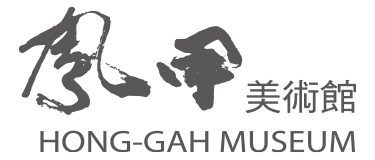The Other Side – The Way of Thread
The Way of Thread
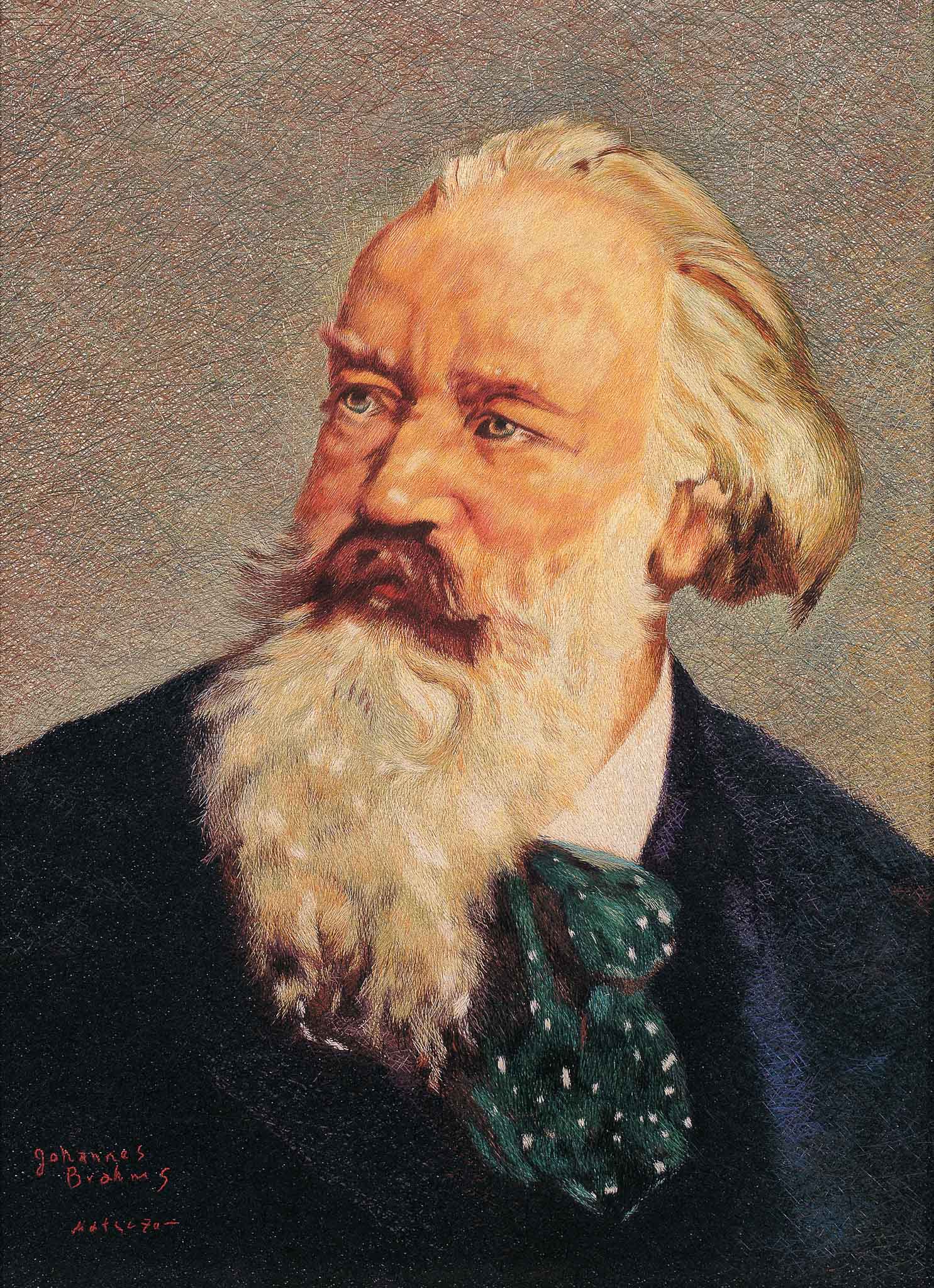
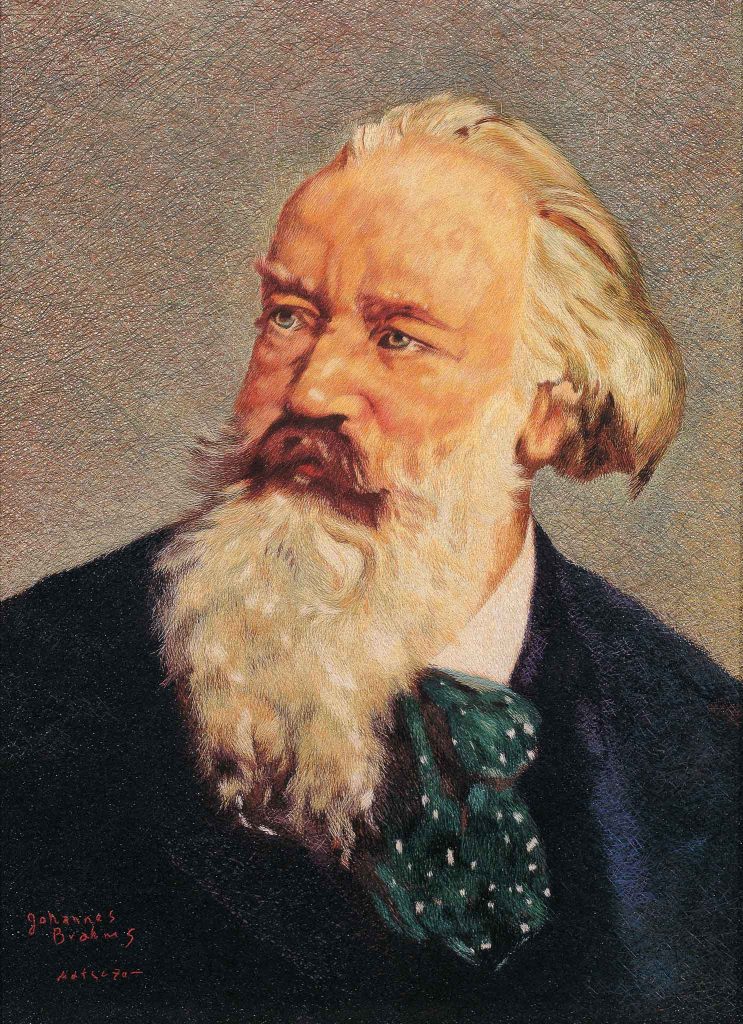
0. Embroidery of Brahms’s Portrait
Anonymous
63.5 × 51 cm
This embroidered portrait features Johannes Brahms (1833-1897), the leading German composer of the Romantic era, who infuses vibrant emotions into his well-structured music. The irregular background texture created by Free Cross Stitch adds layered visual depths and a quiet sense of spatial recession. In contrast, Brahms’s beard and hair are rendered with fine, controlled lines that emphasize the softness and natural flow of each strand. The careful direction and layering of stitches articulate the contours of his face and the intensity of his expression, demonstrating embroiderer’s ability to convey striking details and emotional nuance.
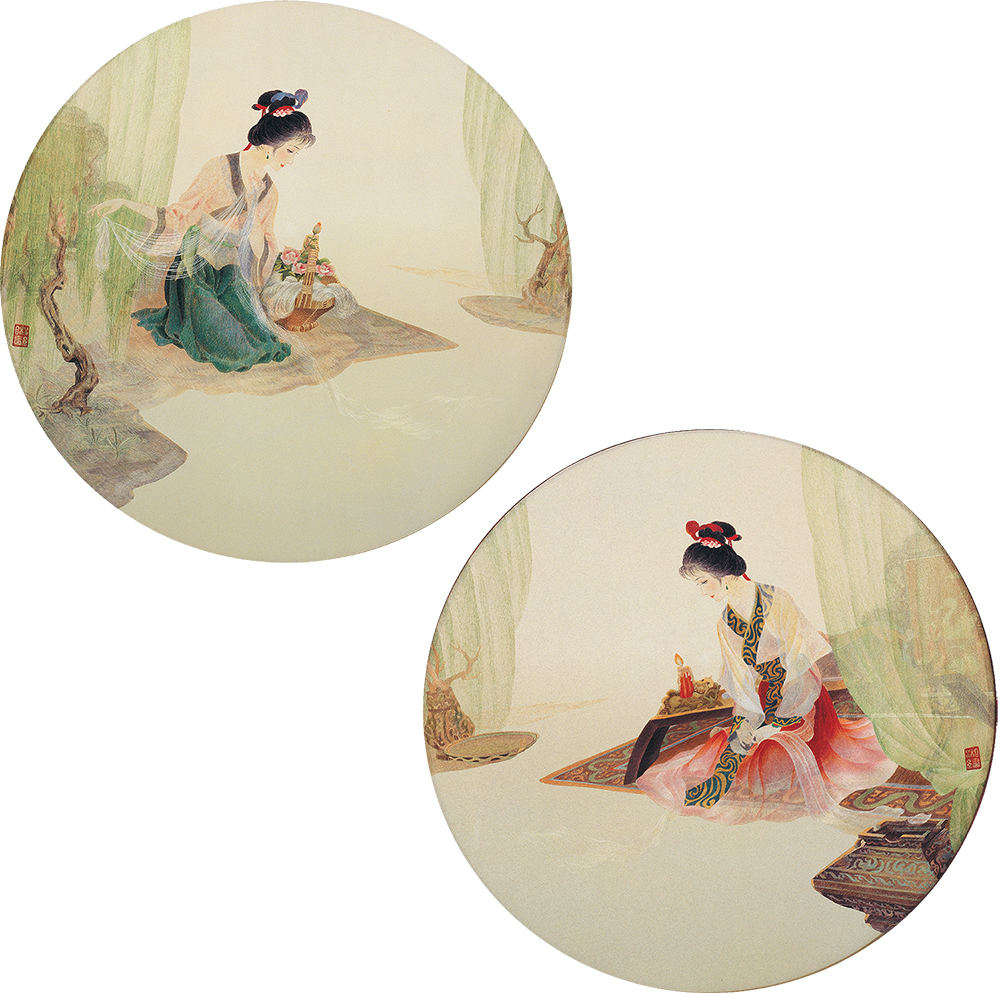

1. Xi Shi Washes Yarn
Hunan Embroidery. Design: Huang Cui-Feng; Embroidery: Rao Bi-You
58 × 64 × 27 cm
Designed by Huang Cui-Feng, Director of the Hunan Xiang Embroidery Research Institute, this work took master embroidery artisan Rao Bi-You over a year to showcase the impressive technique of Double-sided Disparate Embroidery. On the one side, Xi Shi (503-473 B.C.) is portrayed as a lady next to some willow trees by the clear river of the Yue Kingdom. Though dressed in rough clothing with a hairpin on her head, she is unmistakably beautiful and elegant. On the reverse side, sitting behind a gauzy curtain close to a nearly exhausting dim candlelight on an elaborate carpet, the downward gaze and frowning eyebrows reveal the melancholy and sorrow of a woman who is forced to be a concubine in another kingdom solely because of her beauty.
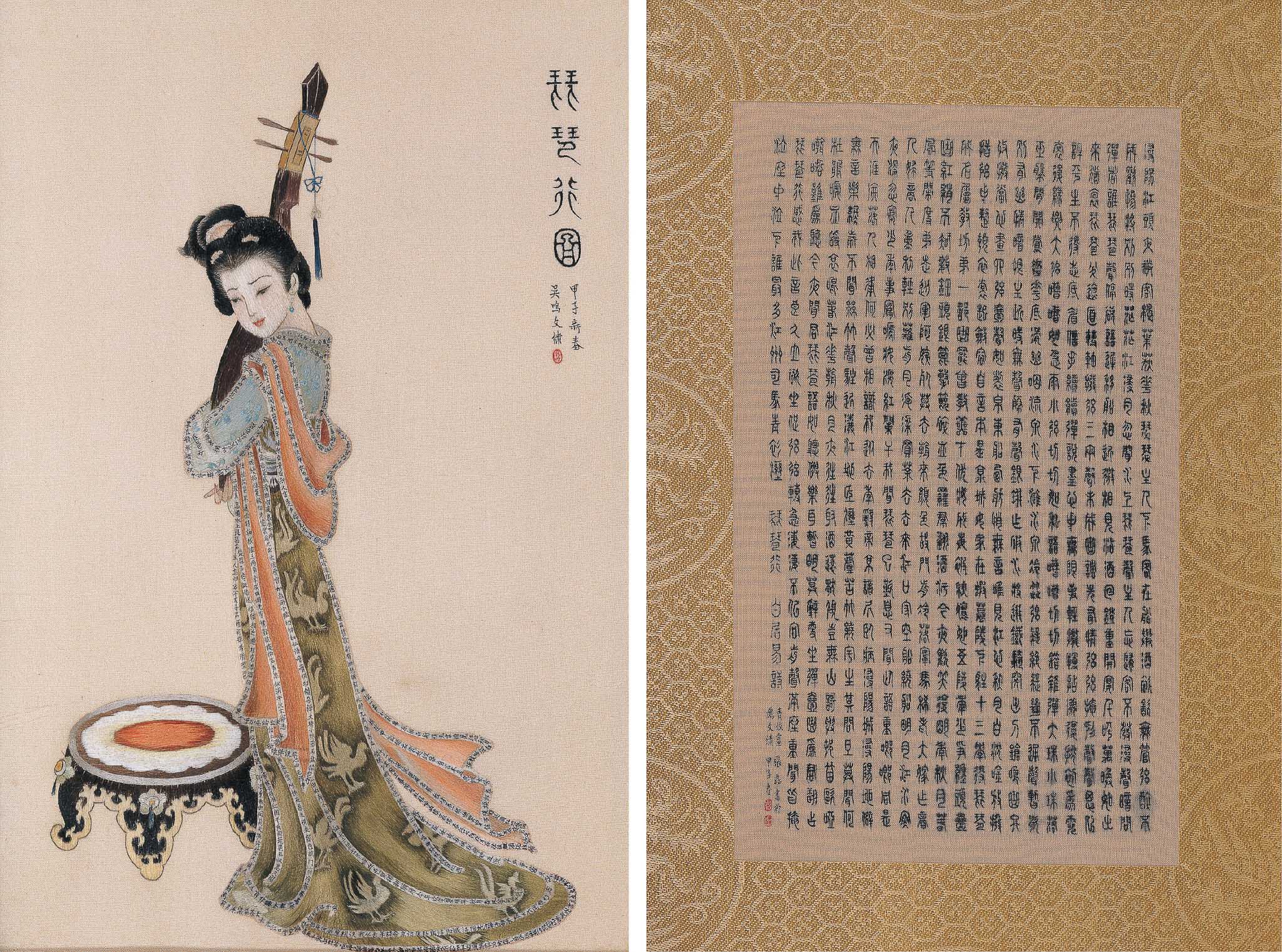
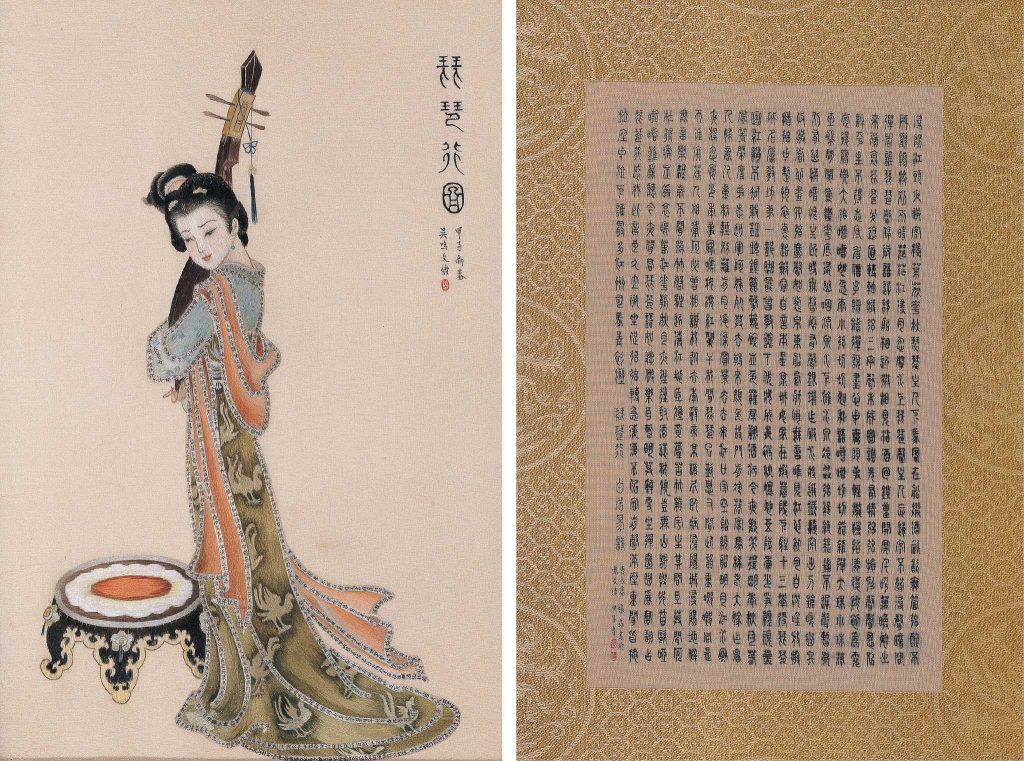
2. Song of the Pipa
Jiangsu Wuxi Subtle Embroidery. Design: Gu Qing-Jiao; Embroidery: Wu Ming-Wen; Calligraphy: Zhang Lei
37.5 x 19 x 14 cm
Inspired by poet Bai Ju-Yi’s (772-846) renowned Song of the Pipa, this embroidery depicts the senior, skilled female musician who plays pipa (a kind of Chinese lute) on the Xunyang River late at night. Rendered in the meticulous Subtle Embroidery technique, the musician is shown in her most iconic pose,“holding a pipa to conceal her face partially.” Along the hem of her flowing garments, the embroiderer has delicately stitched lines from the poem, with each character no more than a fraction of a millimeter in size. On the reverse side, the full text of Song of the Pipa is embroidered in an archaic script with clear, precise, and even strokes that are finely aligned vertically. The piece exemplifies an exquisite fusion of rich history, depth in literature, and finesse in techniques.
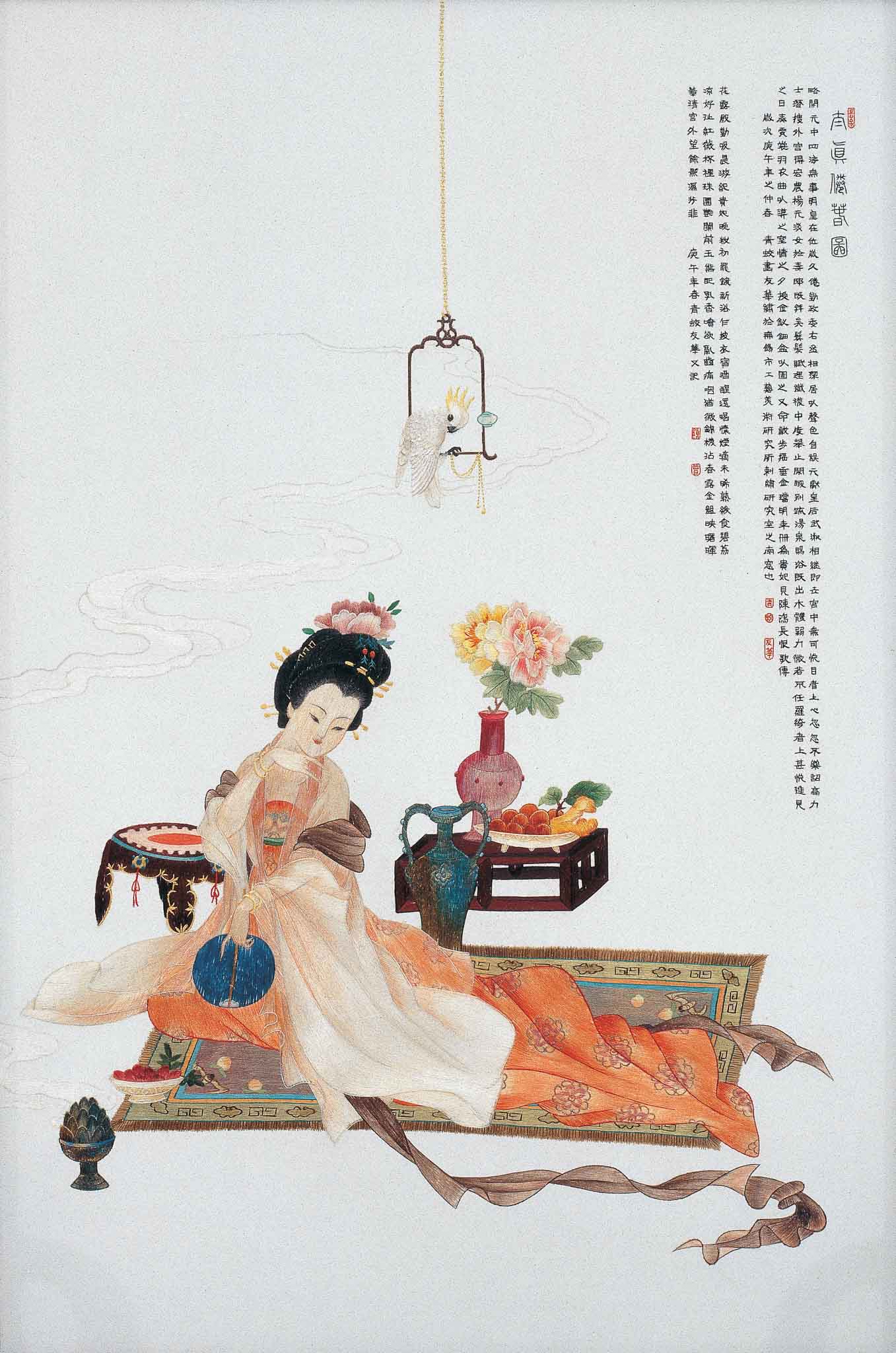
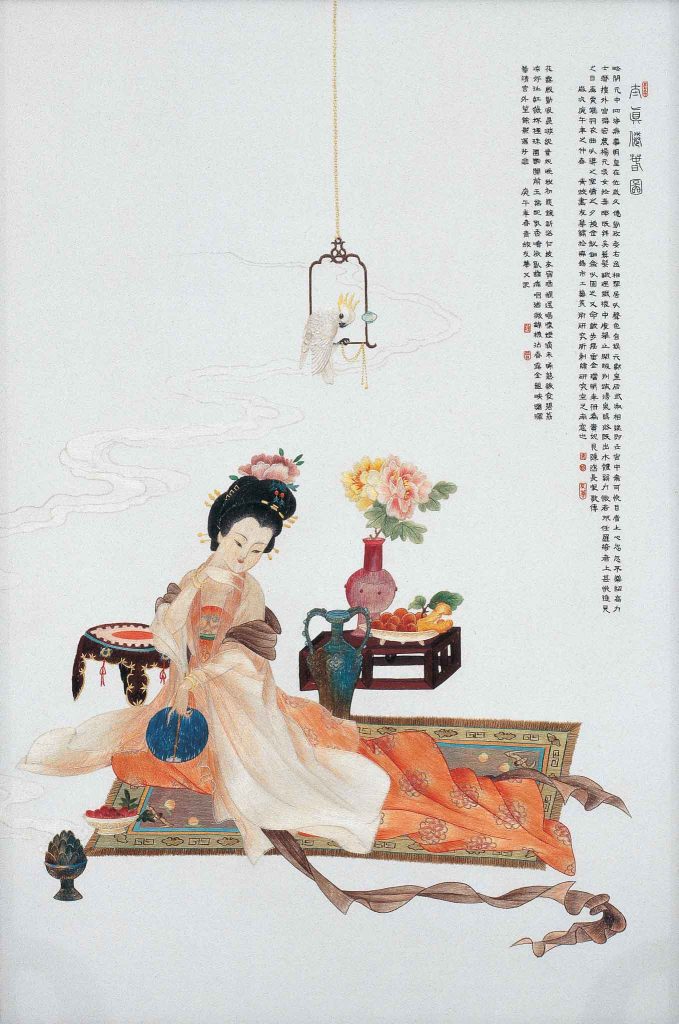
3. Lady Yang in Spring Fatigue
Jiangsu Wuxi Subtle Embroidery. Design: Gu Qing-Jiao; Embroidery: Zeng You-Hua
43.5 × 25 × 12 cm, 1990
This embroidered scene captures Yang Guifei (719-756), the famed Tang dynasty consort, in a moment of languid repose. She leans against a traditional Hu-style stool, holding a round fan, while a dish of vivid red lychees rests nearby—fruits likely sent by express courier from the southern provinces to please the emperor’s beloved. In front of her, an incense burner in the shape of Mount Boshan releases curling wisps of smoke, adding a dreamlike atmosphere that heightens the sense of quiet luxury and gentle indolence. The embroidery is worked entirely in Straight Stitch and mounted as a double-sided table screen. In the upper left corner, a passage adapted from Chen Hong’s Song of Everlasting Regret describes Yang emerging from a bath at the imperial springs, so delicate that she could scarcely bear the weight of silk robes. Each character, no more than a fraction of a millimeter in size, is embroidered with astonishing precision.
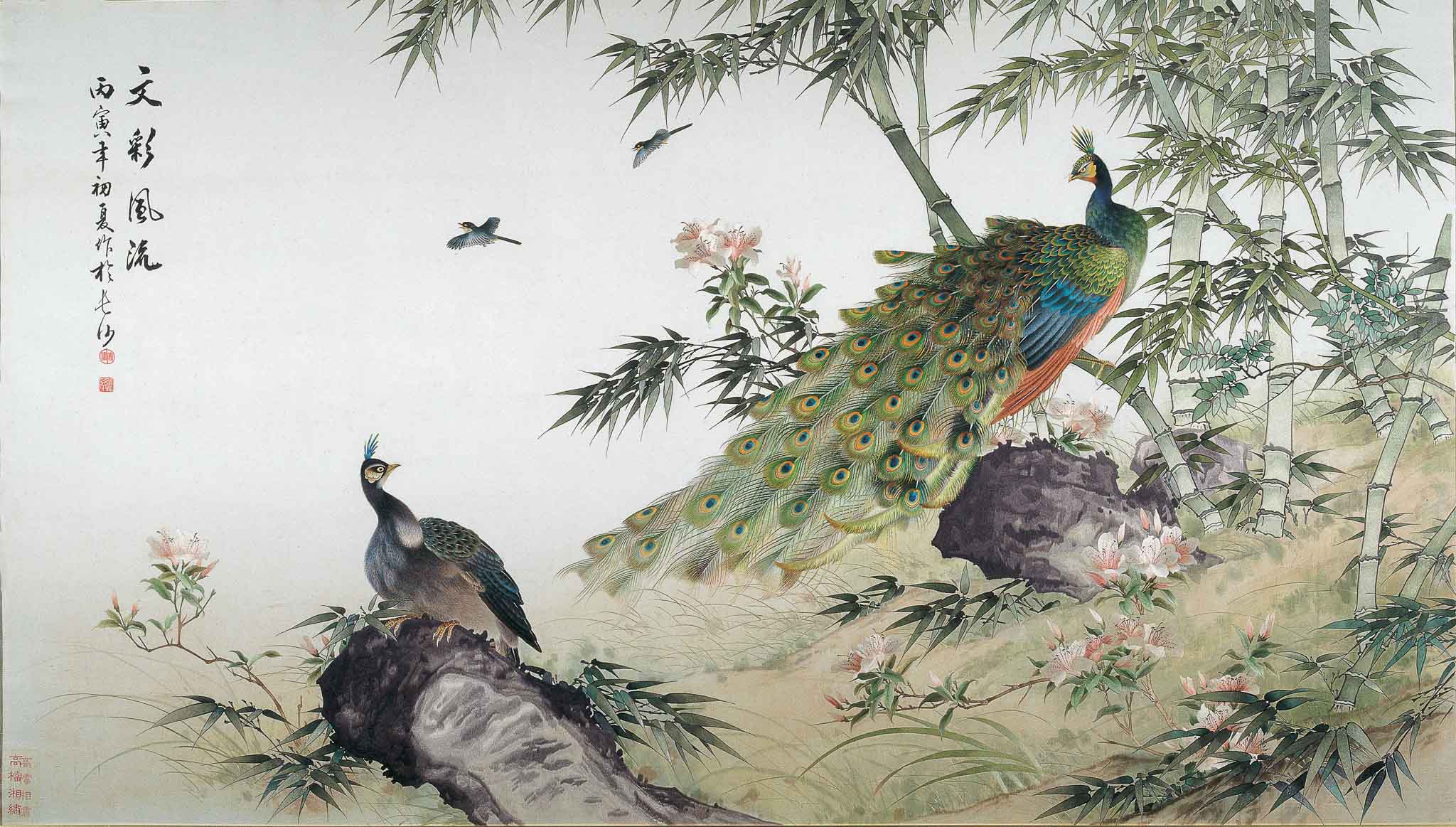
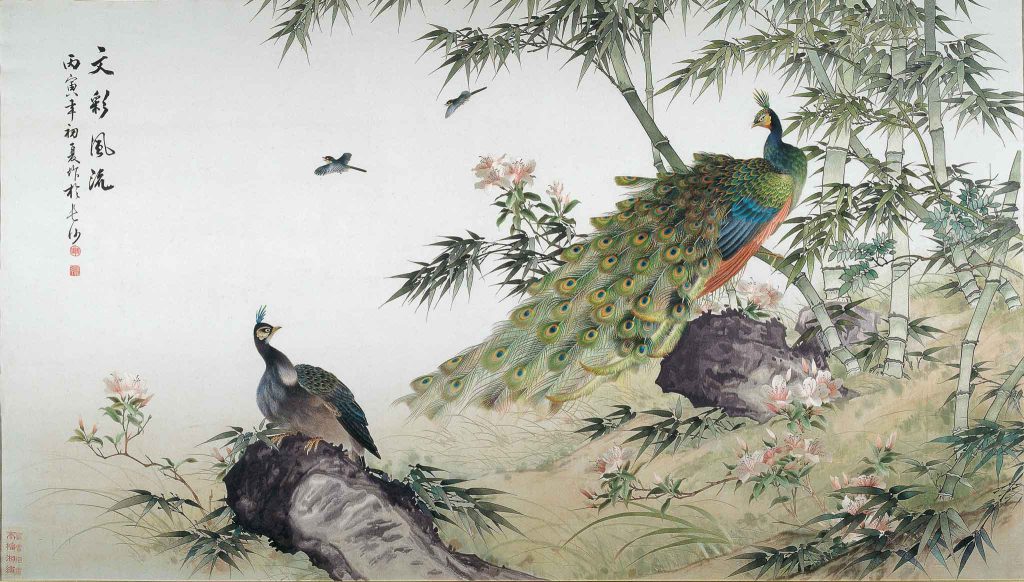
4. Outstanding in Literacy and Manner
Hunan Embroidery. Hunan Embroidery Research Institute
160 × 273 cm, 1986
This meticulously composed embroidery features two peacocks in contrasting postures—one upright and proud, the other crouching in graceful reserve—each embodying a different aspect of the peacock’s bearing. The vivid plumage is rendered with extraordinary delicacy, using silk threads made from actual peacock feathers to capture the iridescent sheen and layered texture of the bird’s tail. The upright peacock gazes intently toward its companion, drawing the viewer’s eye across the composition, where the mirrored glance between the two birds forms a subtle visual dialogue. In the background, a cluster of bamboo rises with stately elegance, while soft pink blossoms and two birds in flight create depth and lyrical contrast. Both in technique and artistic conception, this work exemplifies the pinnacle of Hunan embroidery craftsmanship.
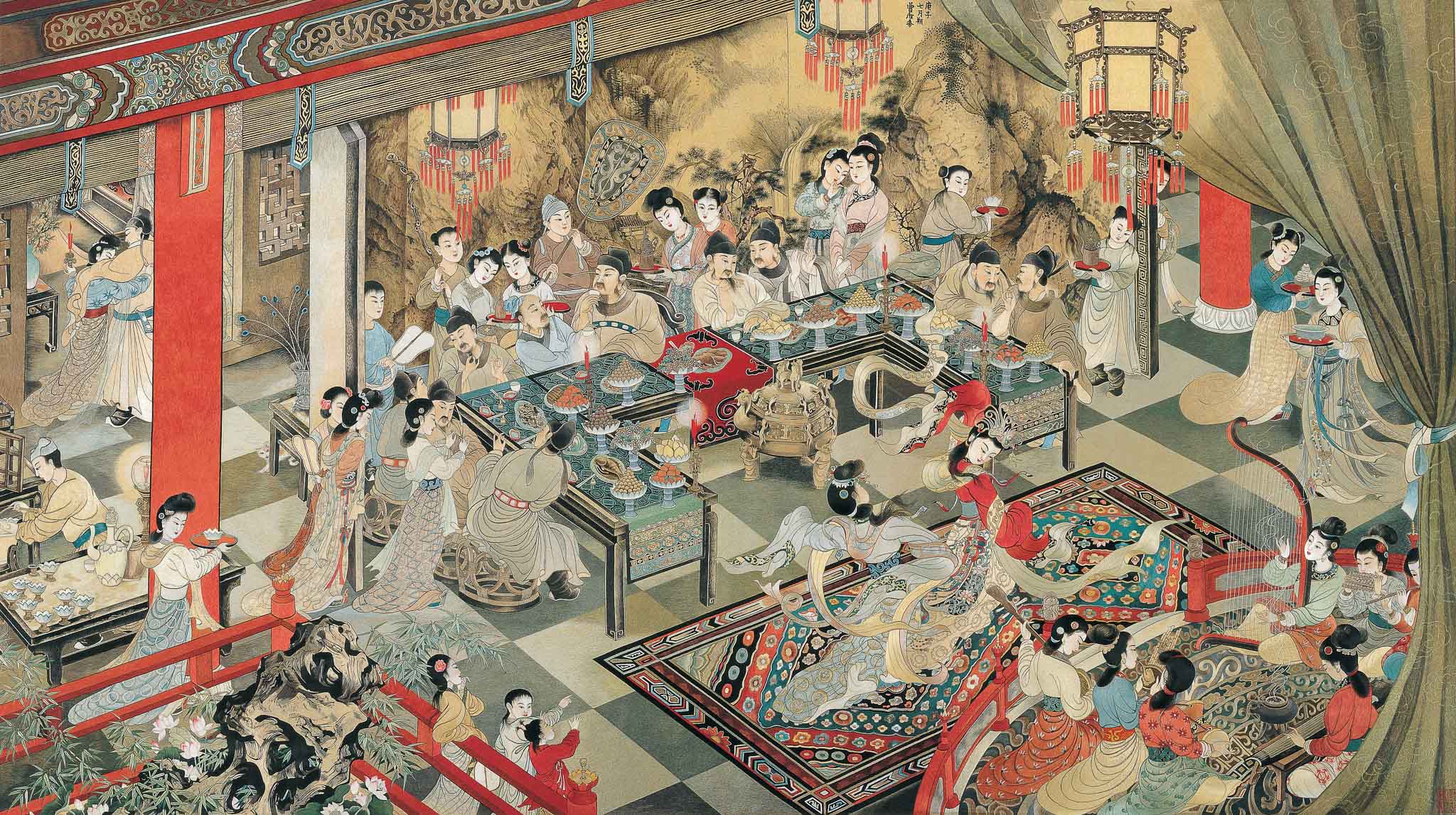
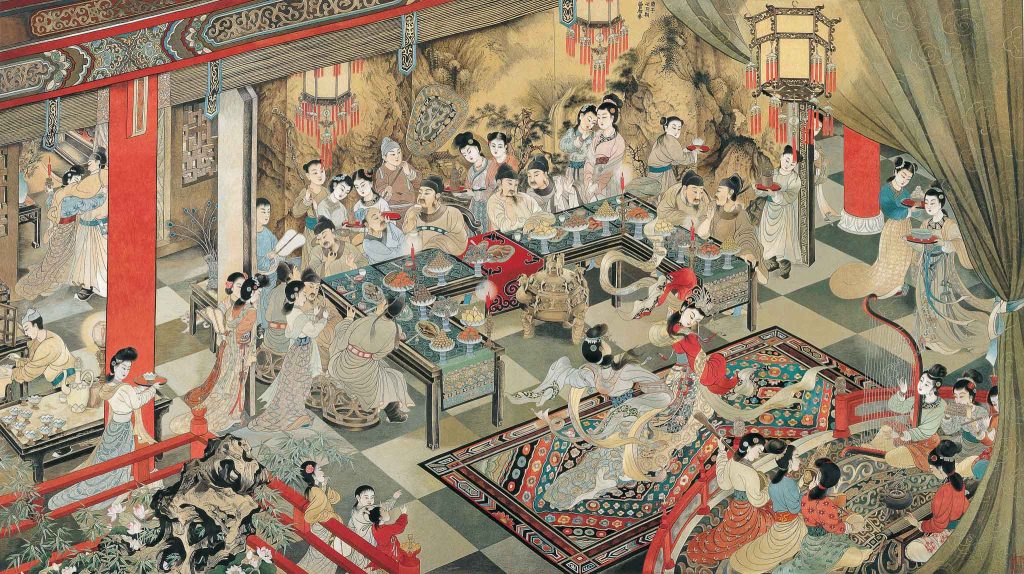
5. Embroidery of Tseng Hou-Hsi’s Night Banquet
Suzhou Embroidery. Lu Jian-Ying Embroidery Studio
116 × 185.5 cm, 1995
This embroidered tableau is based on a painting by Chinese artist Tseng Hou-Hsi (1916-1998), itself inspired by The Night Revels of Han Xizai, a famous horizontal scroll attributed to the Southern Tang (907-960) court painter Gu Hong-Zhong. Tseng reimagines the original scroll as a single unified composition, compressing its episodic narrative into one densely layered scene that captures the revelry and theatricality of the banquet. The embroidery teems with life: figures drink, chat, perform music, and dance amid the clink of wine cups and flutter of sleeves. Each figure is precisely rendered, demonstrating a high level of compositional control and expressive detail. To capture the intricate rhythms of the original, eight embroiderers at Lu Jian-Ying Embroidery Studio worked over four and a half years, employing a wide range of needle techniques to evoke its rich visual and emotional tones. The natural sheen of silk thread amplifies the sense of opulence and extravagance, making this work a recognized masterpiece of contemporary figure embroidery.
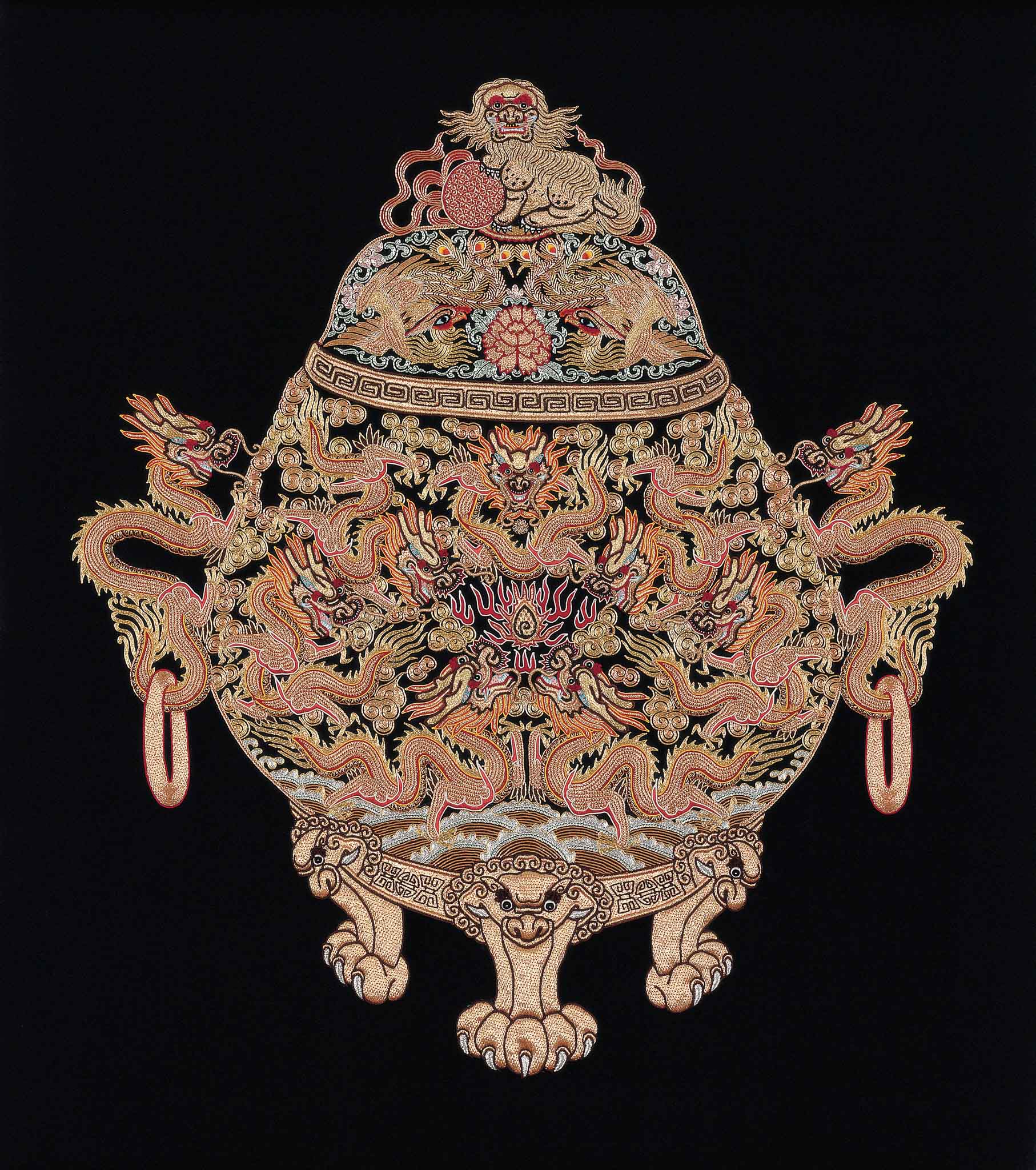
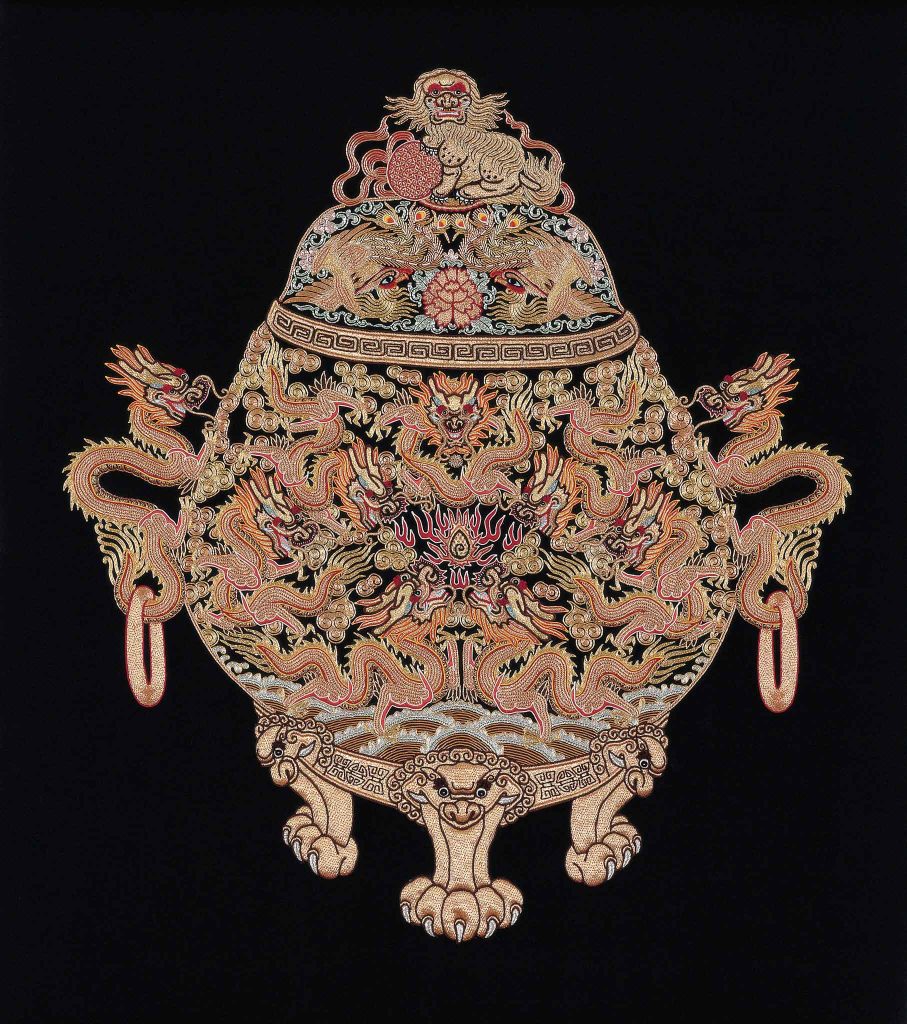
6. Golden Nine-Dragon Censer
Guangdong Embroidery. Anonymous
96 × 89 cm, 1990s
Guangdong Embroidery is frequently used in stage costumes and ceremonial textiles, especially known for its resplendent gold and silver work. To achieve its sculptural depth, the embroiderer layered cotton beneath the surface and overstitched it with gold threads, creating an auspicious aesthetic associated with blessing and abundance. This work is a hanging panel in Chao Embroidery, a distinctive form of Guangdong Embroidery originating in Chaoshan. There are seven dragons whirl around a flaming pearl, while the other two form the vessel’s handles. The censer stands on three lion-head legs, and a lion atop the lid rolls a brocade ball. Rich in symbolic imagery and dynamic in form, the scene exudes both power and festivity.
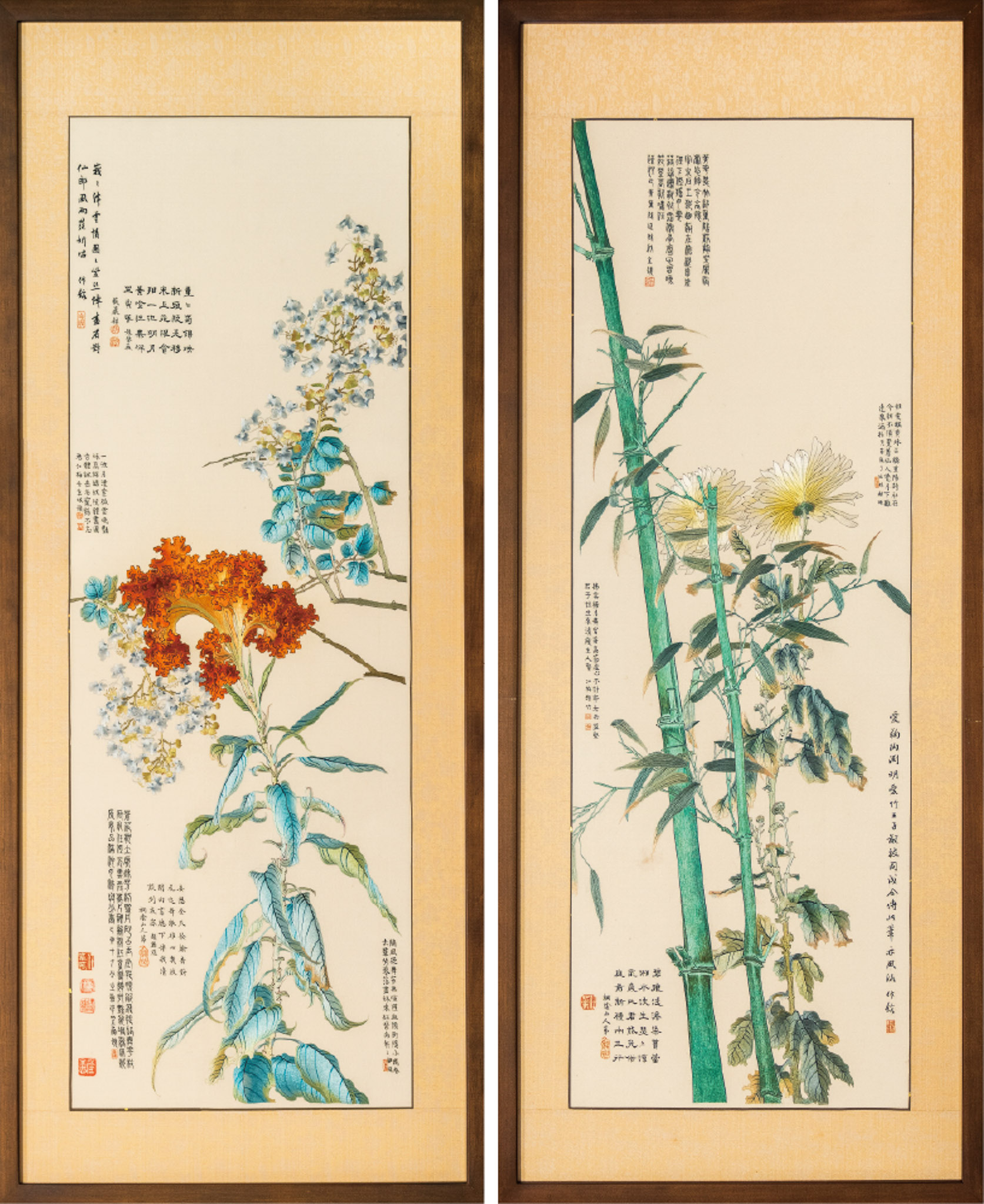
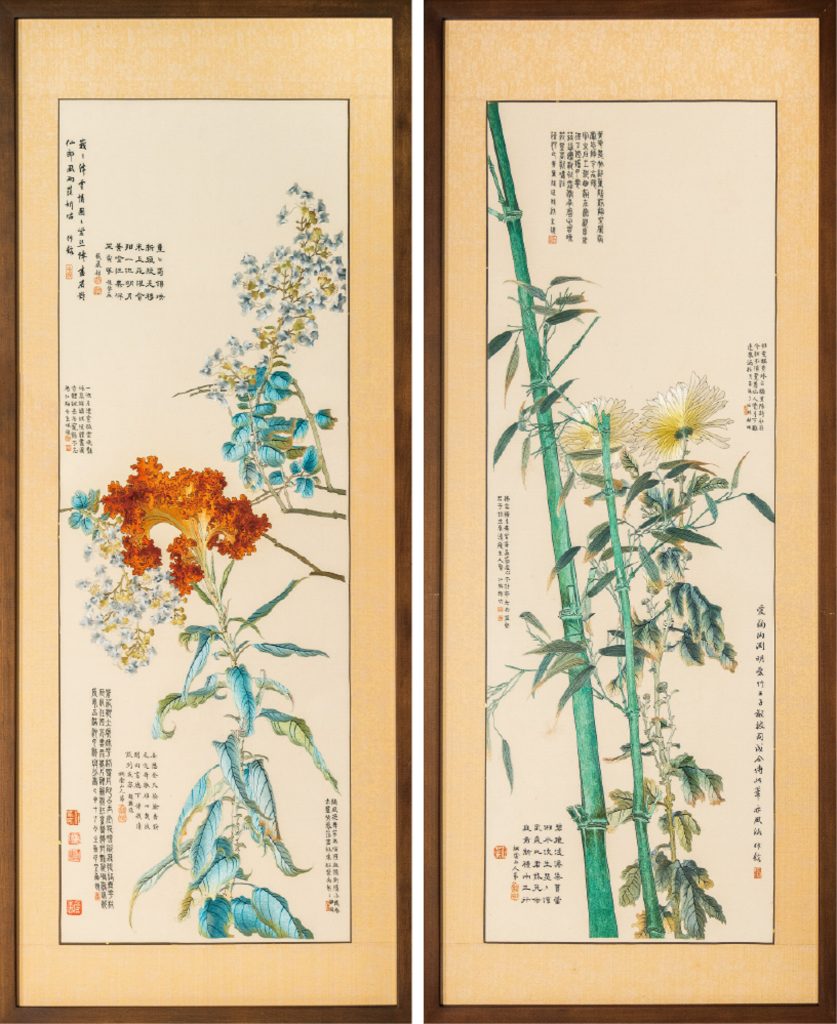
7. Embroidery of Ren Xun’s Eight Floral Panels
Suzhou Embroidery. Lu Jian-Ying Embroidery Studio
Each 95 × 38.5 cm
This set of embroidered panels is based on Eight Floral Panels by Ren Xun, a Qing-dynasty painter associated with the Shanghai Style (Haipai), a 19th-century artistic movement that emerged with the rise of Shanghai as a cultural and economic center. Ren was known for his refined depictions of figures, flowers, and birds, rendered in vivid, opulent colors that appealed strongly to collectors of his time. He came from a family of painters—his father and elder brother were both important figures in the same tradition. The embroidery faithfully renders a rich variety of blossoms, including bamboo, chrysanthemums, apricot flowers, hydrangeas, loquats, peonies, oleanders, daylilies, hollyhocks, irises, gardenias, and cockscombs. The gathering of flowers from all seasons into one composition conveys a vision of natural beauty.


8. Embroidery of Huaisu’s Autobiography
Hunan Embroidery
41.5 × 1562 cm
This monumental embroidered scroll recreates Autobiography, a celebrated work by the Tang-dynasty monk Huaisu. Known as the “Drunken Monk,” he often wrote while inebriated, letting his brush move with wild, unrestrained energy. Autobiography is believed to be Huaisu’s late-life masterpiece, in which he reflects on his devotion to calligraphy, his tireless pursuit of exemplary works, and the review he received from fellow literati. This embroidered interpretation captures not only the structure and movement of each character, but also the dynamic rhythm between strokes and the ink’s tonal variation—an astonishing technical achievement that brings the spirit of calligraphy to life in silk thread.
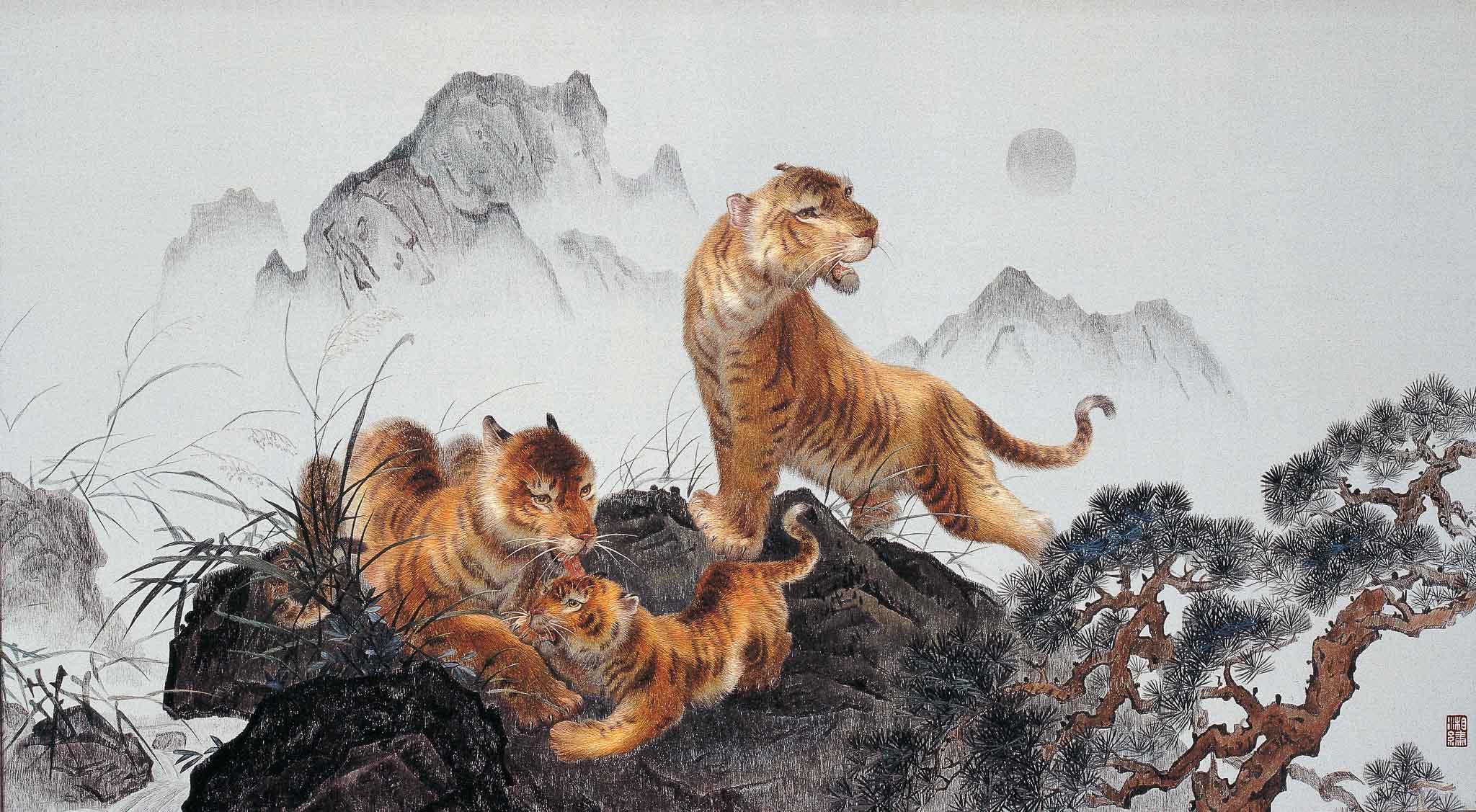
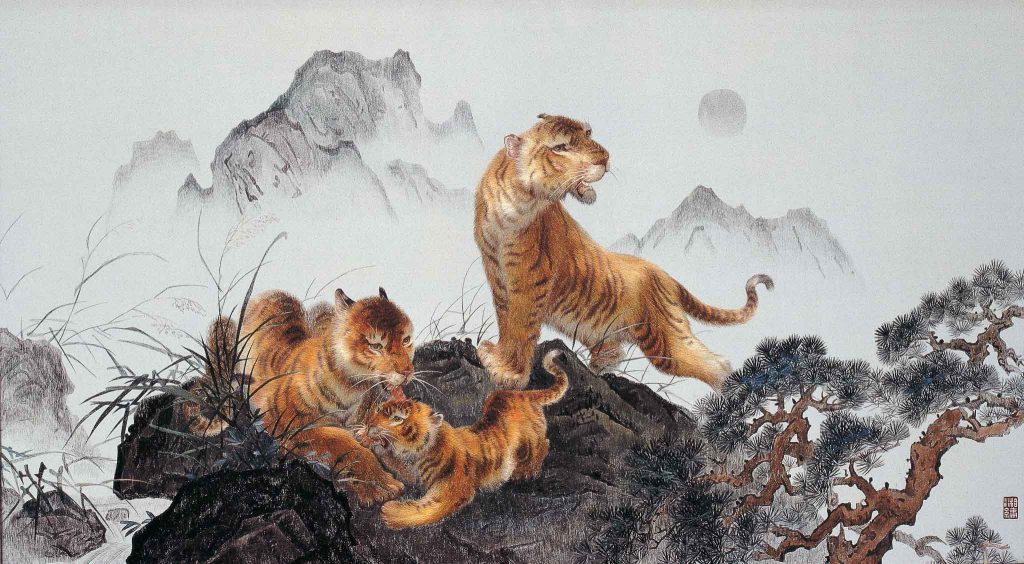
9. Roar of the Moon, Breath of the Pines
Hunan Embroidery. Hunan Embroidery Research Institute Design: Zeng Zhao-Yong; Embroidery: Zuo Ji-Chun
61 × 86 × 30 cm, 1989
Zuo Ji-Chun, one of Hunan’s foremost embroiderers, was born in 1945 and began her career in her teens. She studied Fluffy Stitch under Yu Zhen-Hui, the technique’s inventor. Her exquisite skill breathes life into the tigers’ fur, rendering it with volume, strength, and meticulous clarity. This work depicts a tiger family set against a distant landscape rather than the more typical floral foreground, reflecting the influence of painter and embroidery designer Yang Ying-Xiu. The arrangement of the vigilant male tiger, the nurturing female tiger, and their playful cubs conveys a scene of natural harmony and balance.
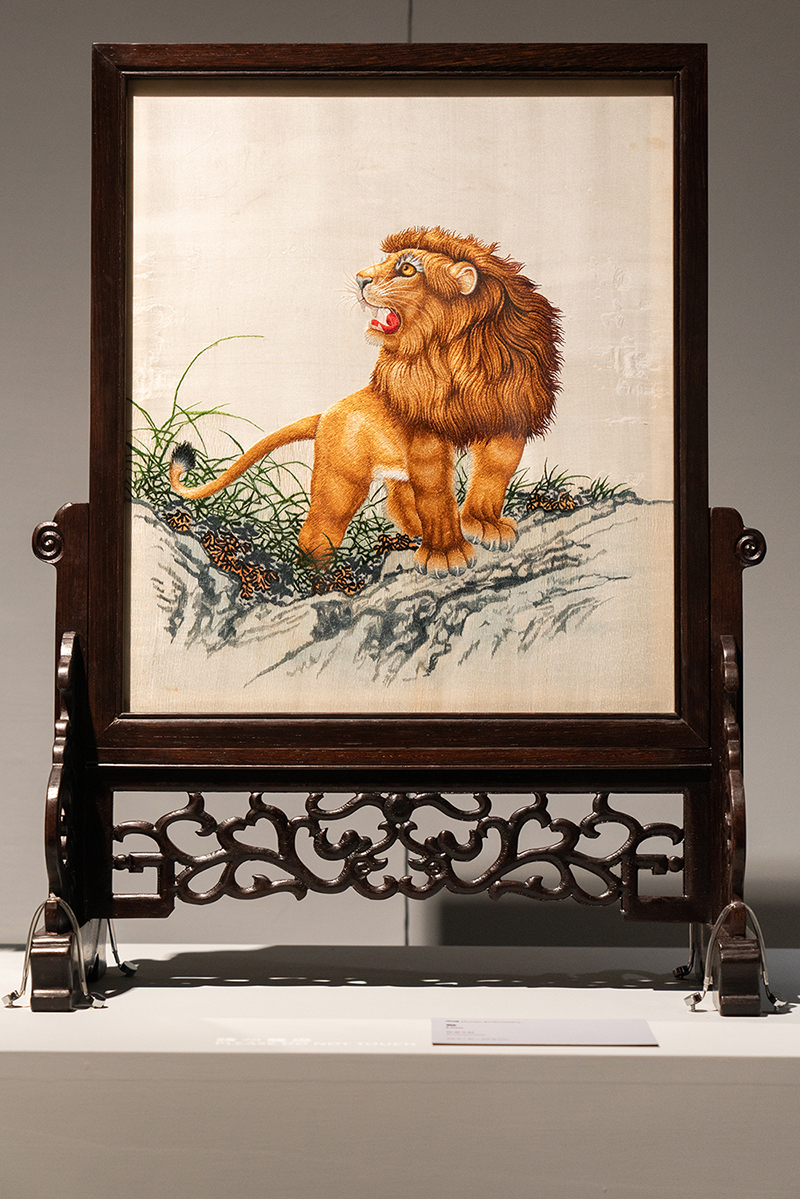
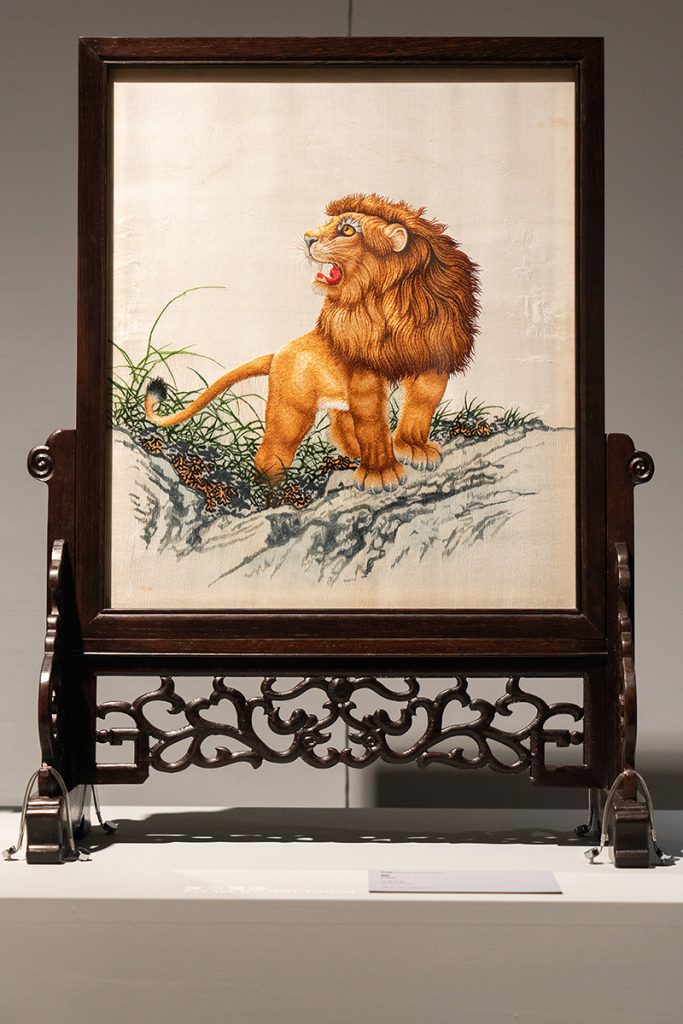
10. Lion
Hunan Embroidery. Anony,ous
66.5 × 51 × 20.5 cm
Fluffy Stitch, a pivotal technique in Hunan embroidery, was developed in the 1960s by the master craftsman Yu Zhen-Hui. By skillfully combining thick and thin threads with varied stitch density, this technique creates a lush, lifelike texture resembling animal fur, and remains a cornerstone of Hunan Embroidery. Although the exact creation date of this lion embroidery is unknown, it does not employ Fluffy Stitch. The lion’s fur appears smooth and orderly but lacks the vivid texture and vitality characteristic. Displayed here as a contrast piece, it invites viewers to appreciate the evolution of stitching techniques and understand the crucial role technical innovation plays in embroidery.
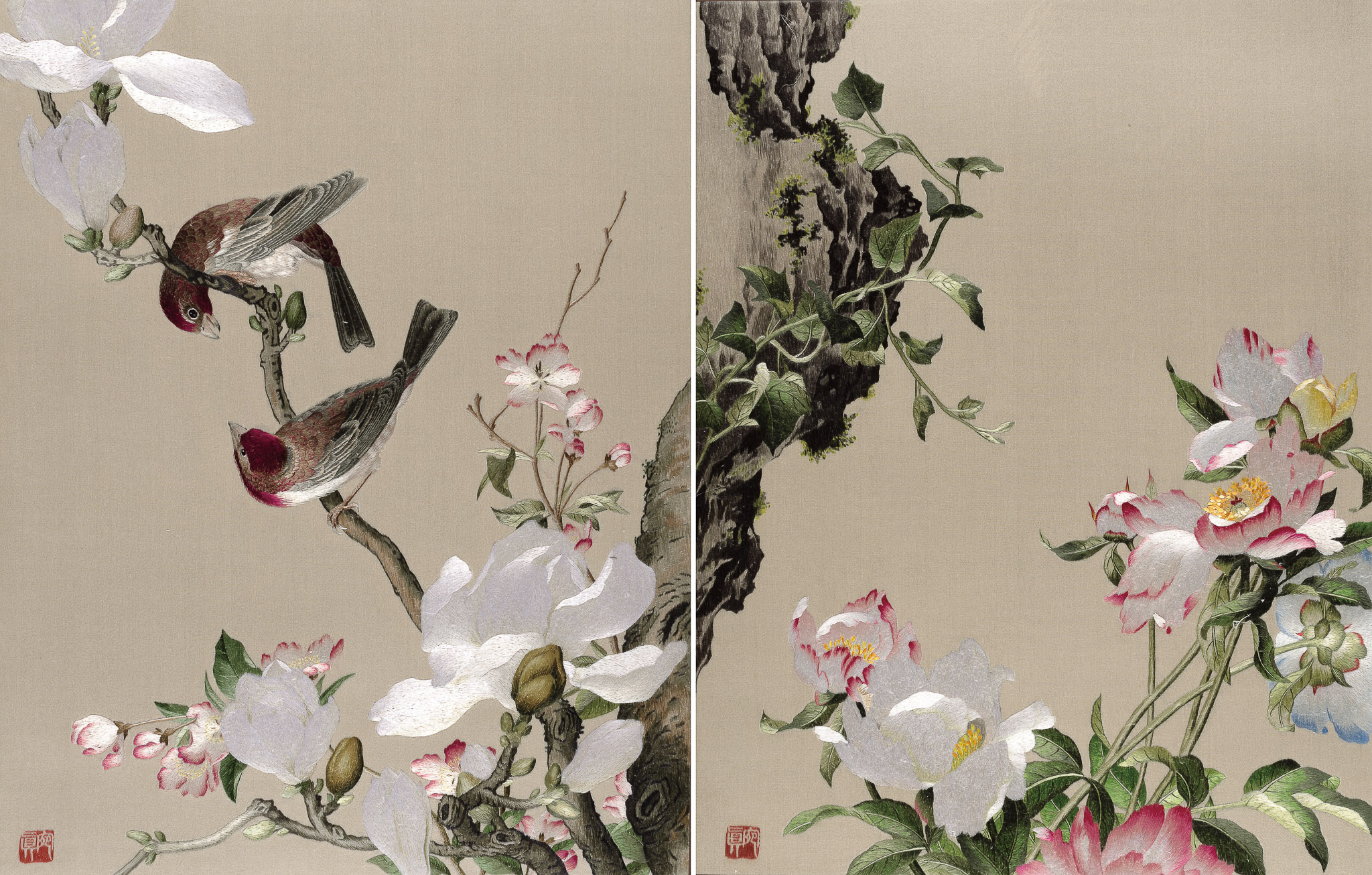
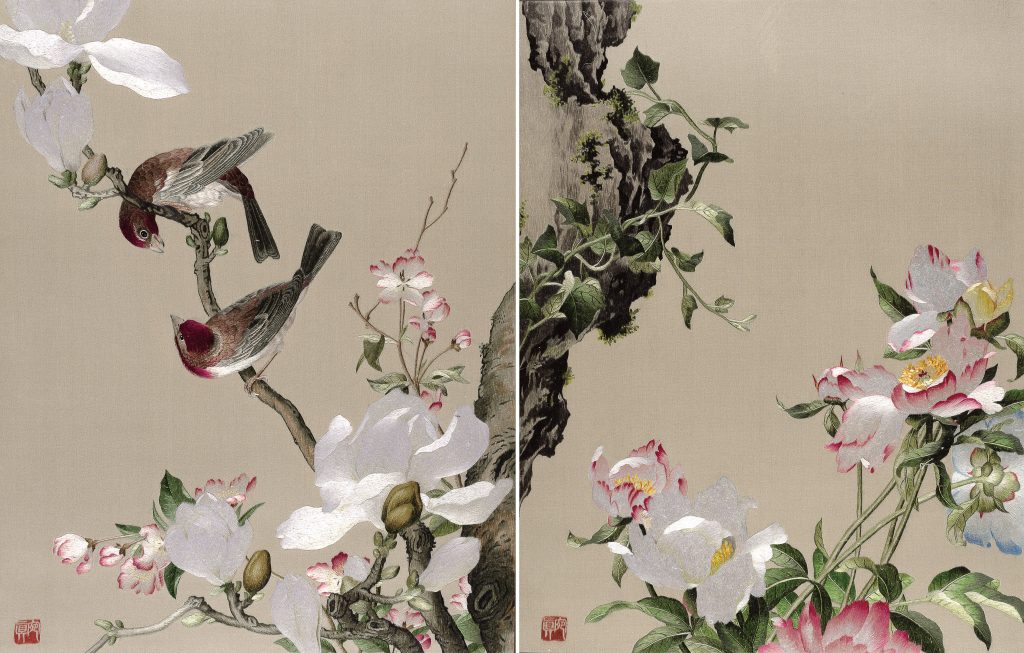
11. Embroidery of Giuseppe Castiglione’s Immortal Blossoms in an Everlasting Spring
Hunan Embroidery. Wanzhen Embroidery Workshop
Every two pages 51.5 x 77.5 cm
Giuseppe Castiglione, an Italian Jesuit missionary and court painter during the early Qing dynasty under Emperor Kangxi, served three emperors—Kangxi, Yongzheng, and Qianlong. He introduced Western techniques of realistic observation and shading, bringing a fresh perspective to the Qing imperial painting academy. Immortal Blossoms in an Everlasting Spring features detailed studies of flowers and birds, including peonies, peach blossoms, paeonies, crabapples, lotuses, cockscombs, lilacs, lilies, bamboo, morning glories, and chrysanthemums. The works meticulously depict the play of light and shadow on petals and leaves, conveying nuanced color gradations. This embroidered album faithfully reproduces the posture and vitality of the birds and flowers with painstakingly fine stitching, achieving a remarkable fusion of Gongbi and oil painting texture.
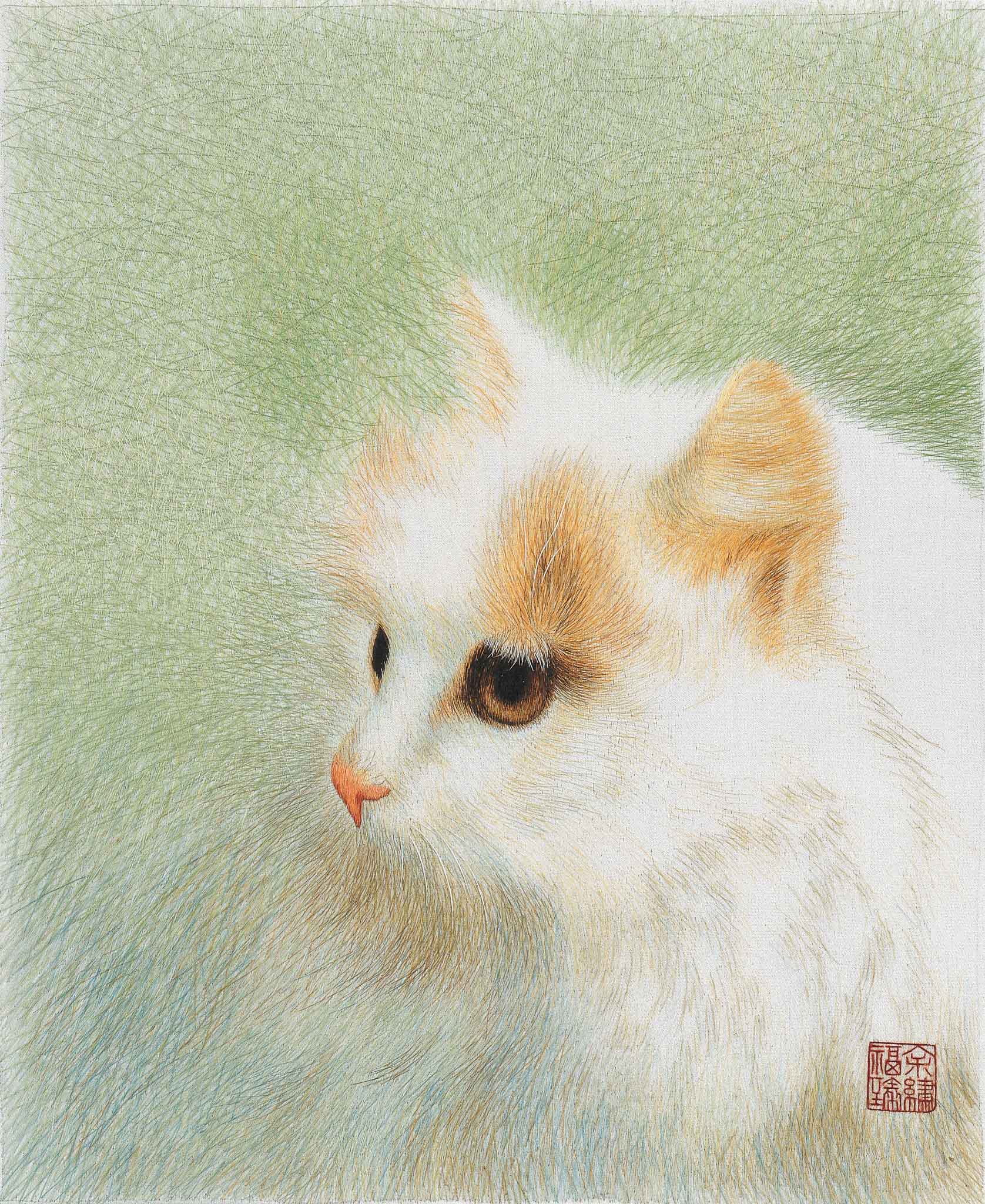
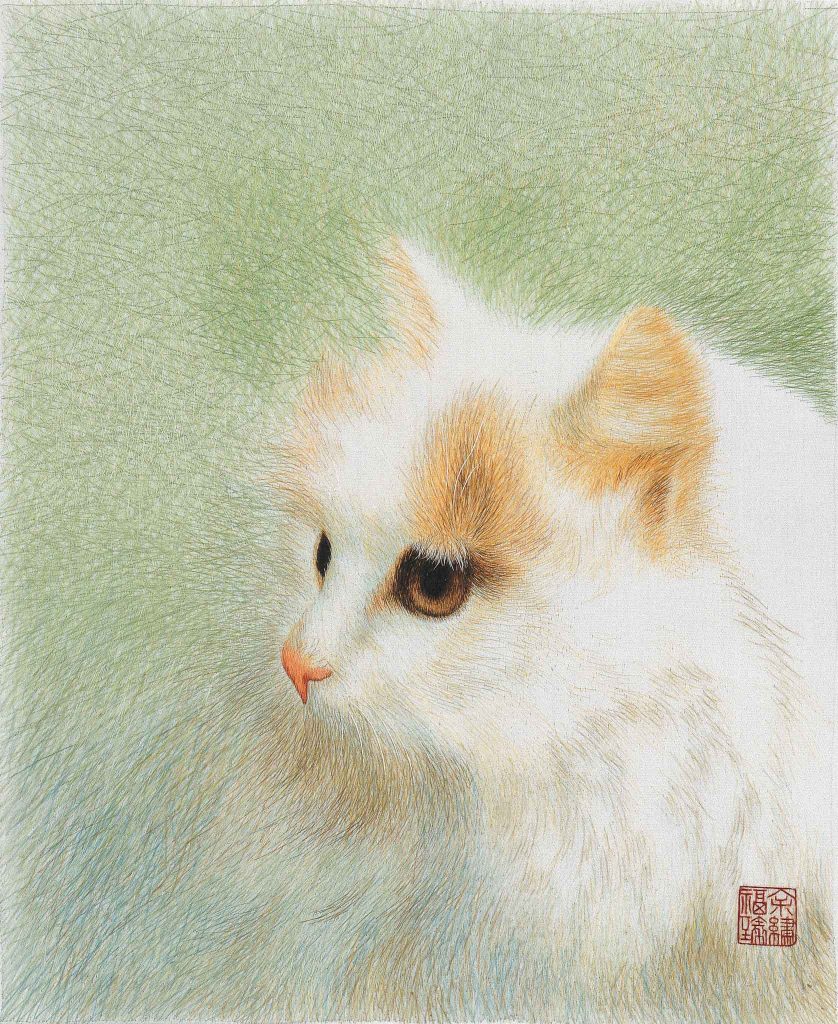
12. White Cat
Suzhou Embroidery. Embroidery: Yu Fu-Zhen
40 × 35 cm, 1988
It is well-known that Suzhou Embroidery excels at depicting cats while Hunan Embroidery is renowned for its skill in portraying tigers. Suzhou embroiderers, living amidst the watery landscapes of Jiangnan, have long been celebrated for their delicate needlework that captures the agile spirit and subtle nuances of cats. These artisans often keep cats both at their studios and homes, closely observing their movements and postures to enrich their embroidery practice. Among them, Yu Fu-Zhen is famously known as the “King of Cat.” Created in 1988, this piece features a background rendered in Free Cross Stitch, where seemingly chaotic threads form an underlying harmony that flows naturally into the contours of the kitten. Yu Fu-Zhen masterfully captures the cat’s delicate expression, imbuing the entire work with a sense of quiet serenity.
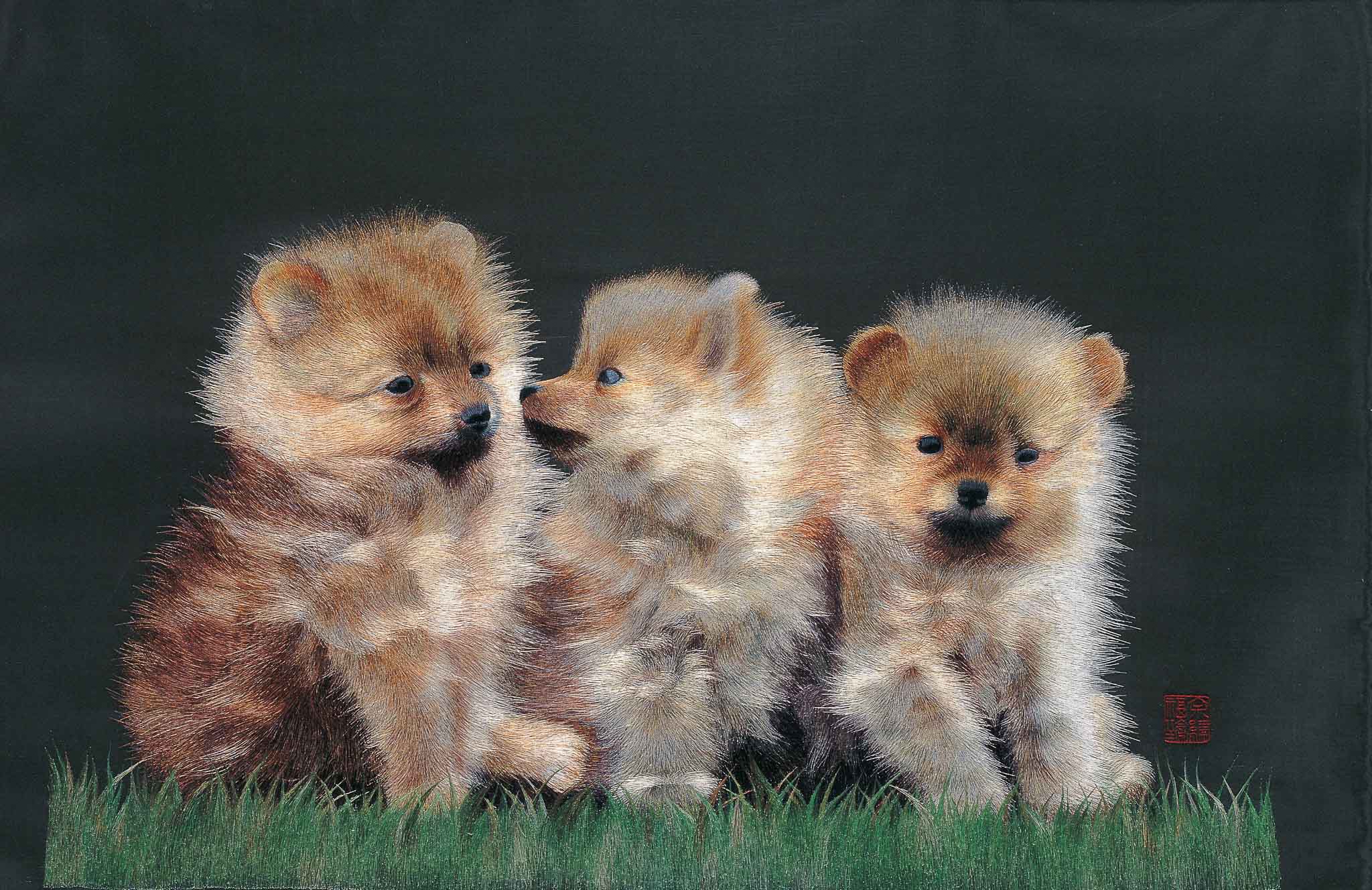
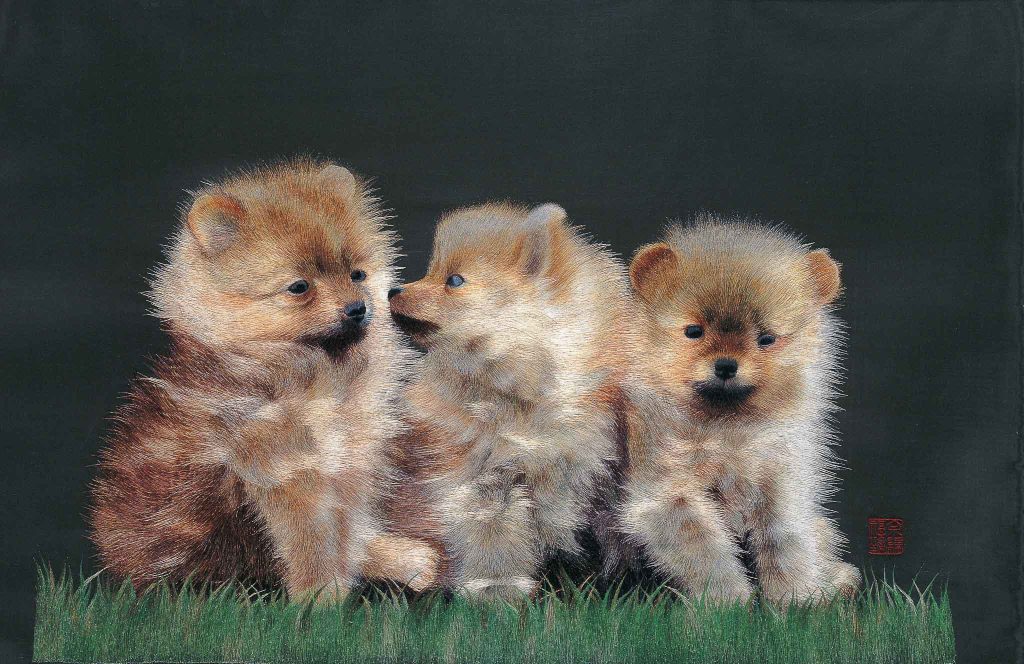
13. Three Dogs
Suzhou Embroidery. Embroidery: Yu Fu-Zhen
61 × 74 cm
This is an exceptional example of single-sided embroidery, remarkable for its ability to recreate the subtle lighting and spatial depth captured in the original photograph—all through traditional stitching techniques. Yu Fu-Zhen, a student of Gu Wen-Xia, has not only inherited her teacher’s skills in cat embroidery but has gone on to surpass her in the depiction of both cats and dogs. Under the guidance and collaboration of both master and apprentice, the piece uses Outline Stitch to achieve a soft, rounded effect, while dynamic needlework brings each puppy vividly to life. Their fur appears fluffy and textured, their eyes bright and expressive, and their postures full of playful charm. The slight blurring of a few paws cleverly suggests motion, showcasing the artist’s creative finesse. Set against a dark background and a shadowy green foreground, the golden-white coats of the dogs stand out with striking clarity.
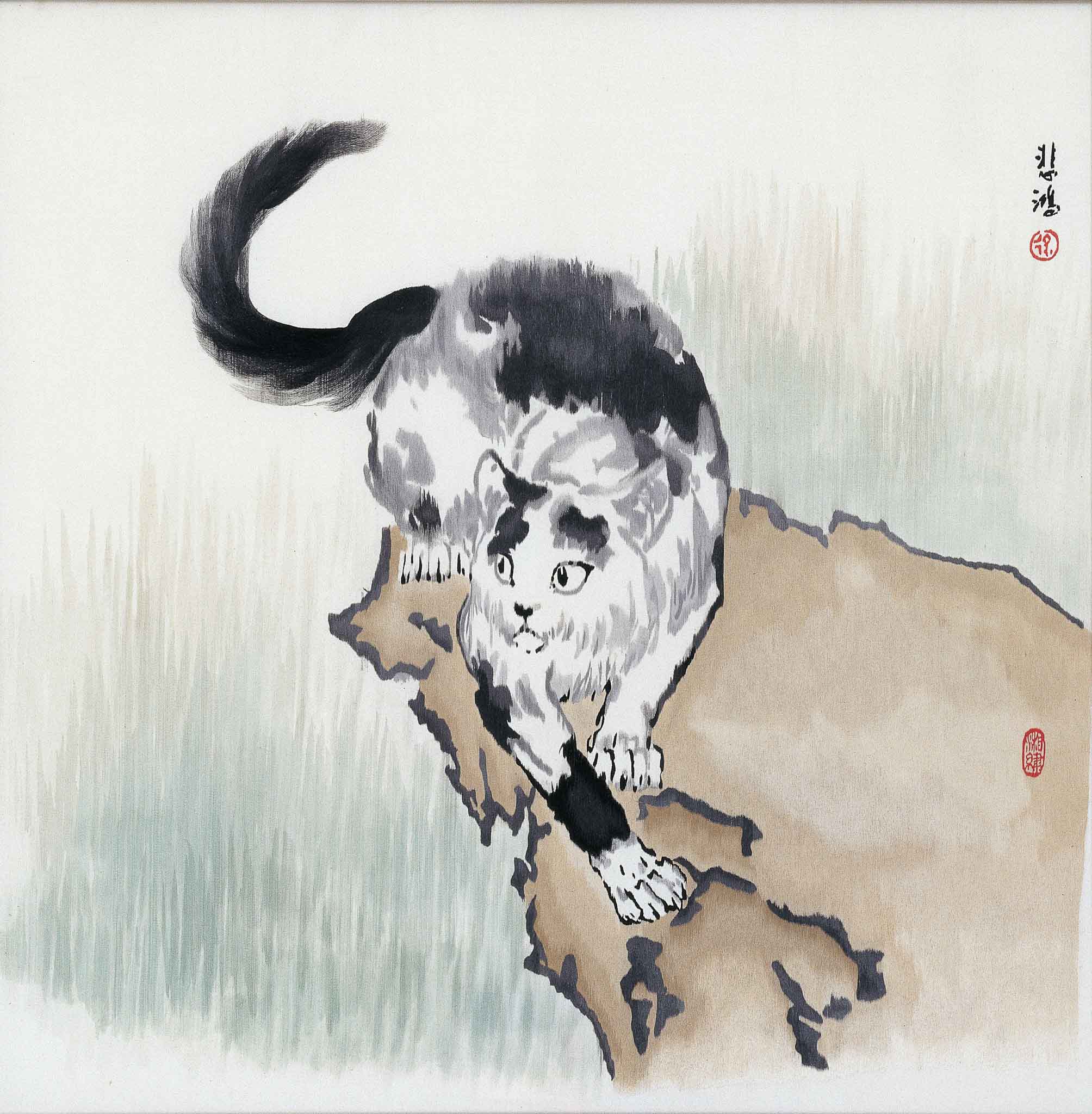
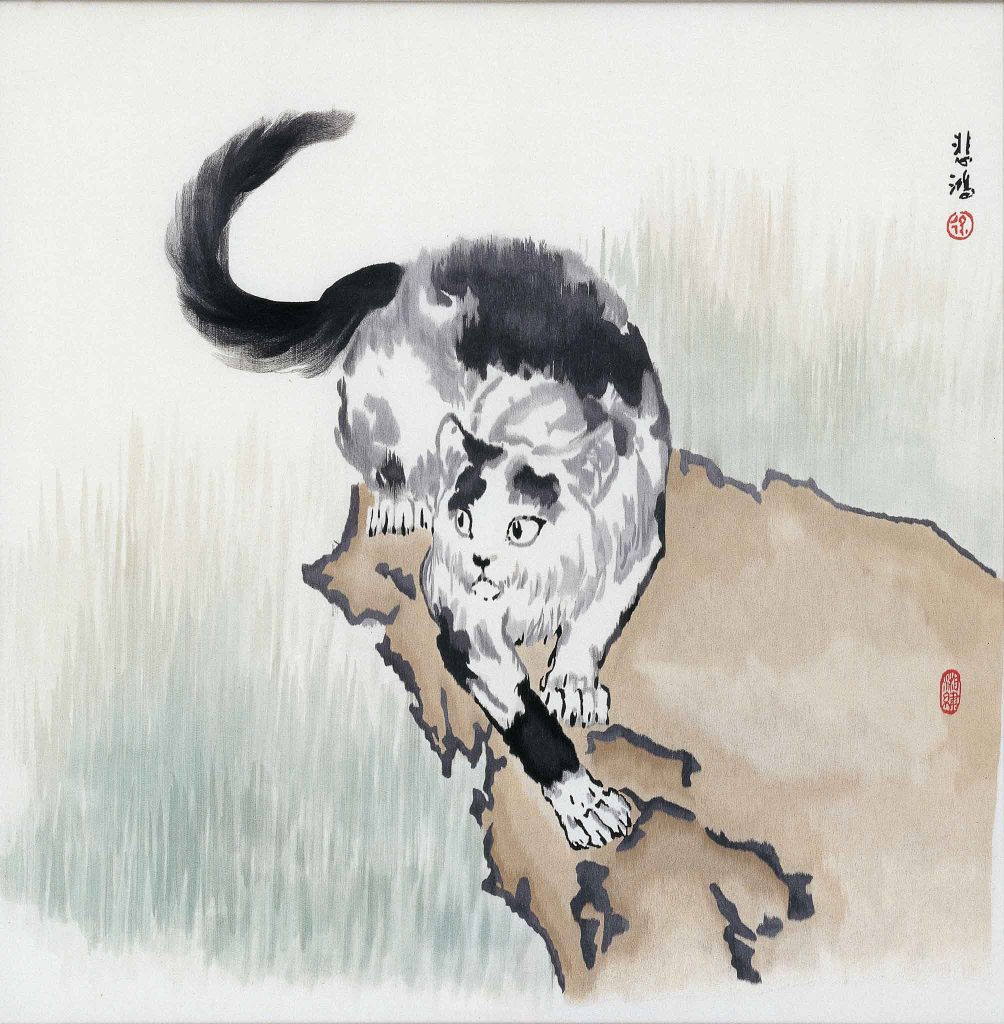
14. Embroidery of Xu Bei-Hong’s Cat
Hunan Embroidery. Hunan Embroidery Research Institute
95.5 × 95.5 cm, 1985
Xu Bei-Hong, a pioneering figure in modern Chinese art active at the beginning of the 20th century, is best known for his integration of Chinese and Western techniques. While his powerful images of galloping horses and expressive portraits are widely celebrated, his charming depictions of cats at play are also a beloved subject. This embroidered piece is based on a painting Xu completed in 1940 and is now in the collection of Xu Bei-Hong Memorial Museum in Beijing. The painting was originally inscribed with the dedication “for my beloved wife Jing-Wen,” which has been omitted in the embroidery version. The cat is rendered with spontaneous, fluid brushwork that captures its intelligence and alertness. Translated into embroidery, the smooth, lustrous threads add a refined sheen to the image, lending the creature both agility and grace.
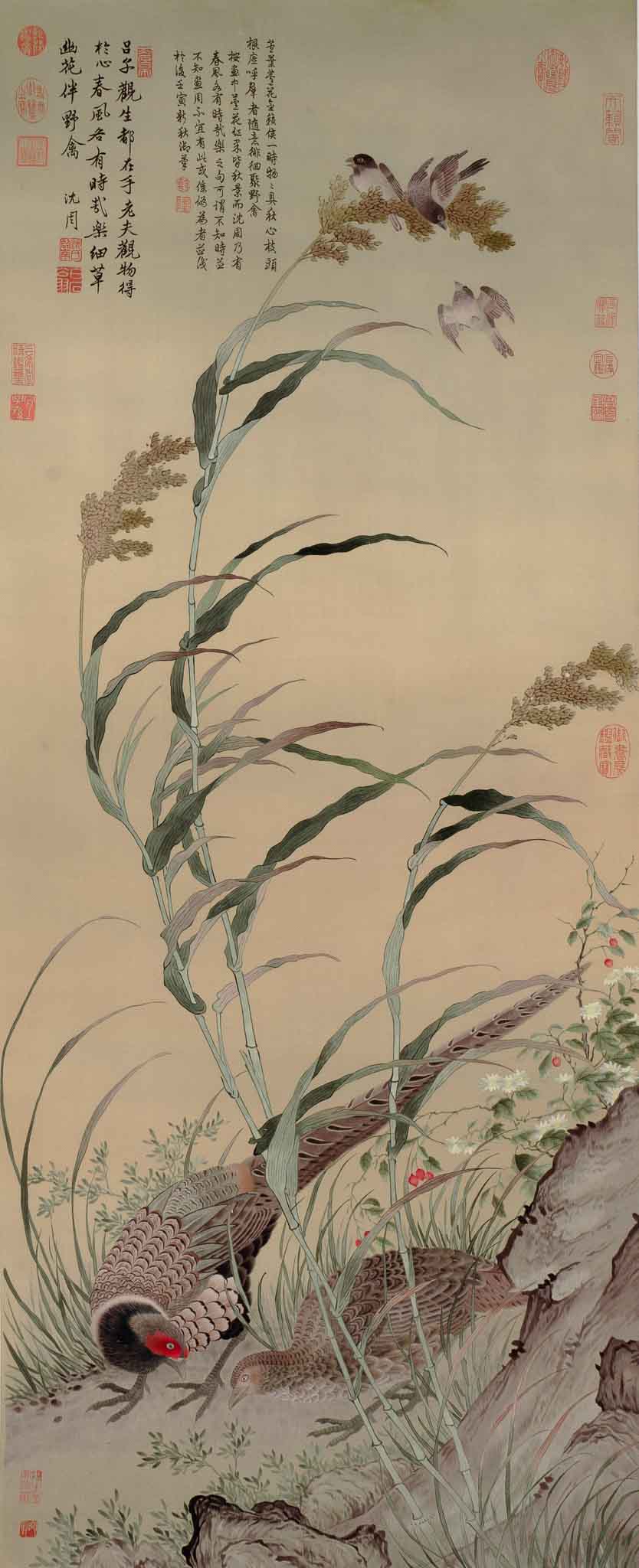
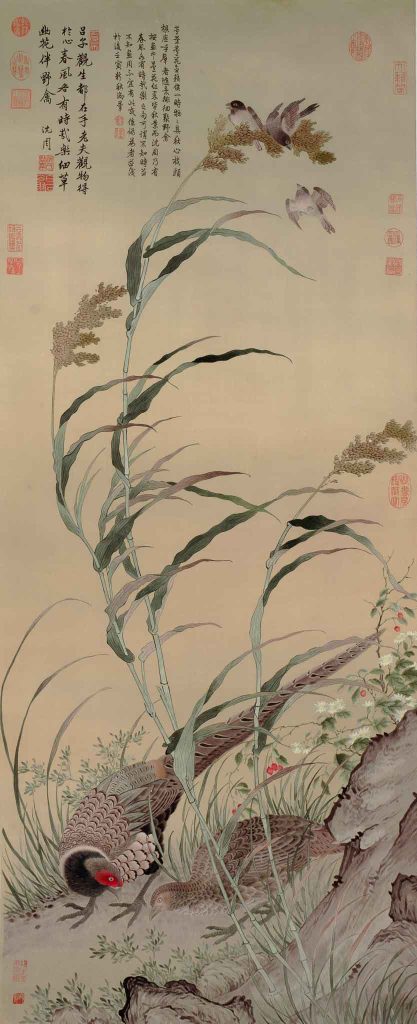
15. Embroidery of Lu-Ji’s Wildflowers and Free Birds
Hunan Embroidery. Embroidery: Yang Jin-Hui
202 × 93.5 cm
This piece depicts a pair of pheasants gently touching beaks as they forage in the lower left corner, beside ripened sorghum stalks swaying in the breeze. The viewer’s gaze naturally follows upward to a sparrow pecking at grains in the upper right. Though unsigned, the original painting bears the seal of Lu Ji, a mid-Ming court painter and commander of the imperial guards, and is thus attributed to him. Lu Ji was known for skillfully blending meticulous Gongbi brushwork with freer, more expressive strokes, creating compositions that are both vivid and fresh. Floral and bird subjects were among his specialties. This embroidered rendition faithfully captures the elegant coloration and lively naturalism of the original work, while the fine texture and subtle sheen of the silk threads add a new tactile dimension.
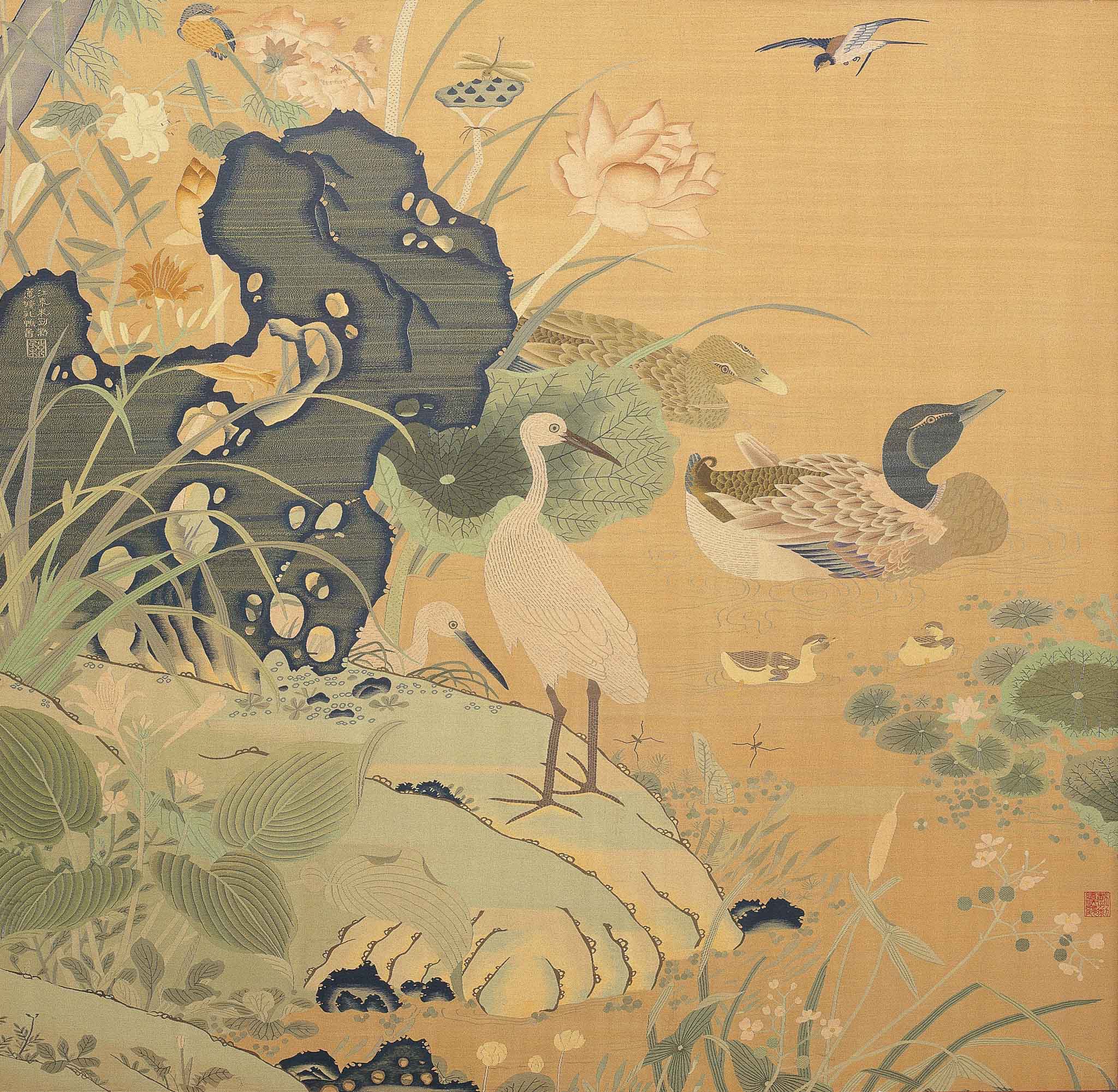
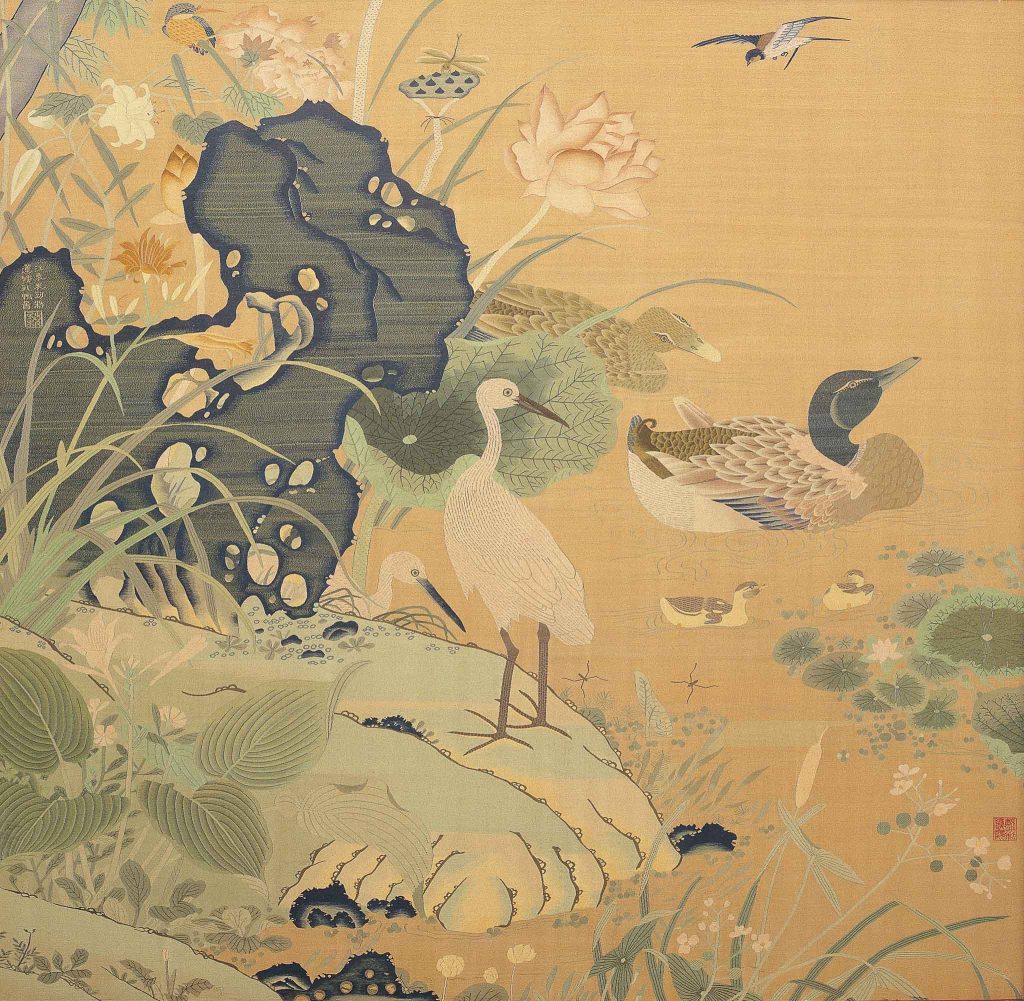
16. Embroidered Replicas of Zhu Gang’s Ducklings on a Lotus Pond
Silk Tapestry (Kesi), Suzhou Embroidery Research Institute
172.5 × 136 × 60 cm
This work is a faithful reproduction by the Suzhou Embroidery Research Institute of the original Ducklings on a Lotus Pond by Zhu Kerou, a renowned female silk tapestry (kesi) artist of the Southern Song dynasty. The original piece is preserved in the Shanghai Museum. Unlike embroidery, Kesi is created on a loom with shuttles, using raw silk warp threads and colored silk wefts. During the weaving process, distinct color blocks are formed by repeatedly changing the silk threads, which leaves subtle, carved-like traces where colors meet—giving rise to the alternate name “carved silk.” Set against a misty, smoky background, the composition features dark rocks, green slopes, wild ducks crossing the water, egrets standing still, and dragonflies flitting among verdant lotus leaves. Together, it vividly evokes a tranquil corner of a lotus pond in late spring to early summer, which stands as a rare and remarkable example of Kesi technique.
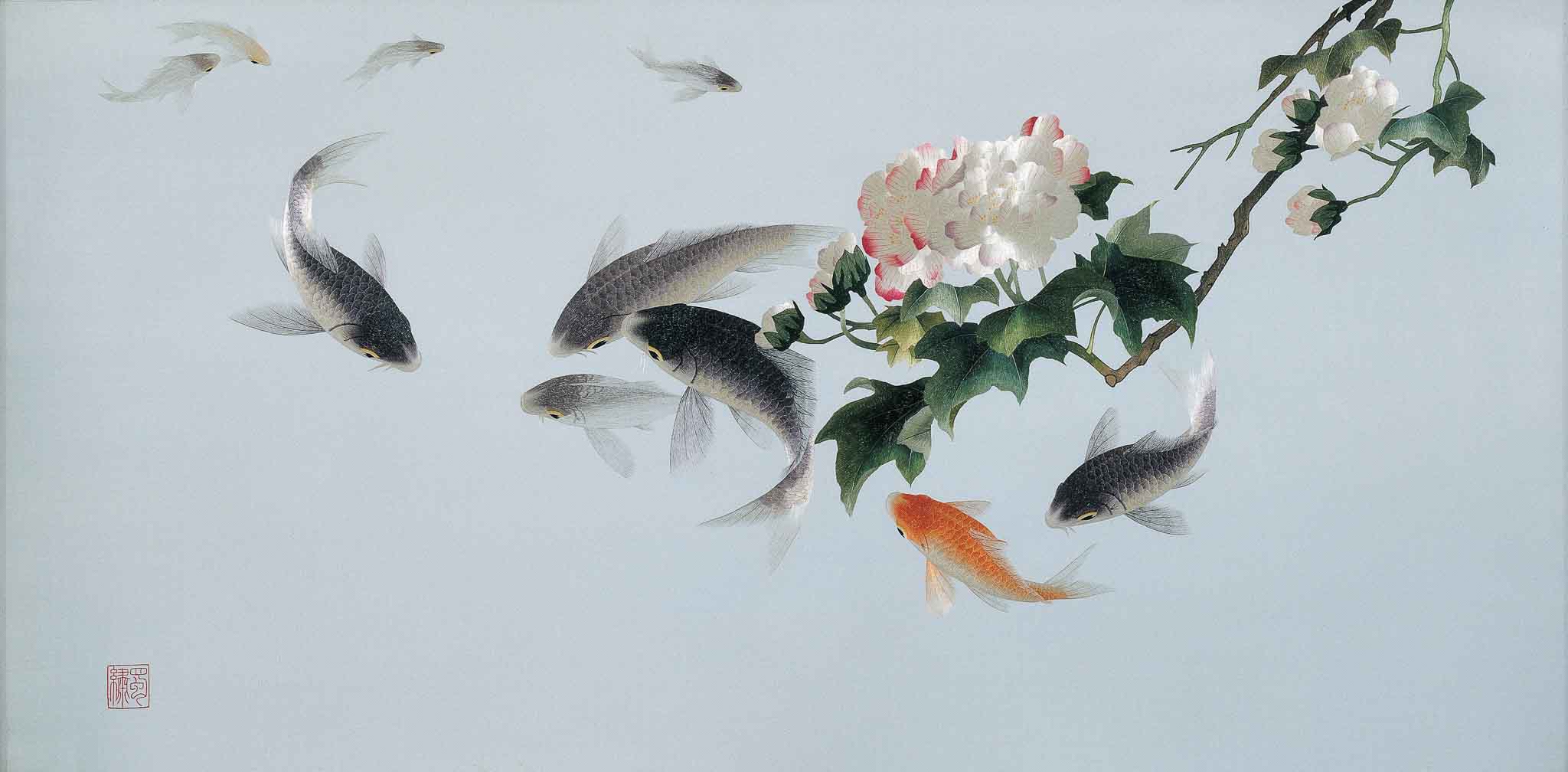
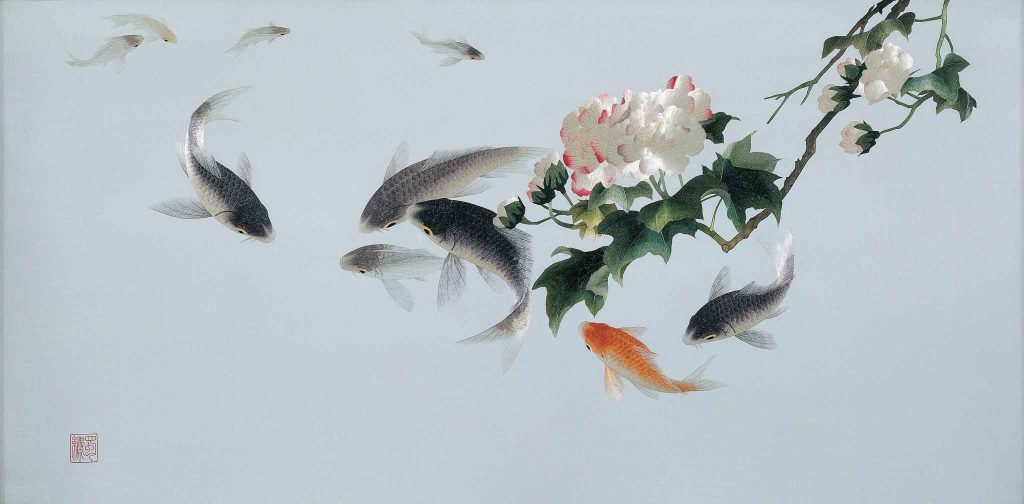
17. Hibiscus and Carp
Sichuan Embroidery. Design: Chu Pei-Chun; Embroidery: Sichuan Embroidery Research Institute
115 × 165 × 45 cm, 1990s
Chengdu, also named “Hibiscus City” since the late Tang Dynasty, is situated in the Sichuan Basin, a region shaped by the flow of the Yangtze River and its Three Gorges. The area’s long-standing relationship with water is evidenced by historic infrastructure such as the Dujiangyan irrigation system, built during the Qin dynasty. Accordingly, the hibiscus and carp are celebrated traditional motifs in Sichuan Embroidery. In this work, red and white hibiscus bloom above the water, while carp swim beneath, forming a vivid composition that connects flora and fauna. The carp scales are rendered with stitches especially in Sichuan Embroidery to exquisitely convey the fish’s effortless motion through water. The viewer can almost feel the splash of cool water as the fish flicks its tail, evoking the refreshing sensation of being immersed in a clear stream.
